Can Being on a Boat Cause Vertigo: Mal de Debarquement Syndrome
What is Mal de Debarquement syndrome? How does it affect people after being on a boat? What are the symptoms and characteristics of this condition?
Understanding Mal de Debarquement Syndrome (MdDS)
Mal de Debarquement Syndrome (MdDS), also known as “MdDS” or “MDDS”, is a type of vertigo and imbalance that can occur after getting off a boat or ship. This condition is characterized by a persistent rocking or swaying sensation that continues long after the individual has disembarked.
Historical Perspectives on MdDS
The first potential reference to MdDS can be found in the writings of Erasmus Darwin in 1796, where he described the sensation of a “rocking” or “swaying” motion experienced by individuals after prolonged time on the water. A similar observation was made by author Jack London in his 1904 book “Sea Wolf”, where he discussed the “startling effect of the cessation of motion” experienced by those returning to land from the ocean.

While these early descriptions may document a form of “land sickness”, it is unclear whether they meet the current clinical definition of MdDS, which requires a persistent duration of symptoms for at least a month.
Characteristics of MdDS
MdDS primarily affects middle-aged women, with studies indicating that up to 85% of those diagnosed are female. The median duration of symptoms can range from several months to years, though some cases may resolve on their own over time.
The key characteristics of MdDS include:
- Onset of symptoms immediately or shortly after disembarking from a boat or ship
- Persistent rocking, swaying, or imbalance sensation
- Difficulty concentrating and fatigue
- Improvement of symptoms when driving or in motion, but worsening when stationary
Recent Research and Developments
MdDS has gained more attention in recent years, with several reviews and studies published to better understand the condition. Researchers have made efforts to differentiate MdDS from other dizziness-related disorders, such as vestibular migraine and persistent postural-perceptual dizziness (PPPD).

A 2015 review by Van Ombergen et al. and a 2016 publication by Hain and Cherchi have provided valuable insights into the current understanding of MdDS. Additionally, a 2020 study by Cha et al. has further explored the differentiation of MdDS from other similar conditions.
Case Studies and Patient Experiences
Numerous case studies have been documented, providing a deeper understanding of the patient experience with MdDS. One example is a 50-year-old woman who developed imbalance, rocking sensations, fatigue, and difficulty concentrating immediately after returning from her first ocean cruise. Another case involved an avid cross-country skier who experienced a “motion memory” sensation of still skiing even after returning home.
These case studies highlight the persistent and disruptive nature of MdDS, which can significantly impact an individual’s daily life and activities.
Prevalence and Clinical Data
Existing literature on MdDS provides some insights into the prevalence and clinical characteristics of the condition. A summary of the available data is presented in Table 1:

| Authors | Subjects | Age | Females | Males | Median Duration (months) |
|---|---|---|---|---|---|
| Cha et al, 2008 | 64 | 39 | 48 | 16 | Variable |
| Hain et al, 1999 | 27 | 49.3 (38-76) | 26 | 1 | 42 (6 months to 10 years) |
| Brown and Baloh, 1987 | 6 | 50.8 (33-71) | 5 | 1 | 4 |
| Murphy, 1993 | 4 | 40 (36-48) | 4 | 0 | 1-12 |
| Mair, 1996 | 10 | 37.5 (15-55) | 9 | 0 | 1-6 |
| Total or (average) | 111 | (43.3) | 82 (85%) | 14 (14.5%) | Months to years |
It’s important to note that this table only represents a subset of the available data, as more recent studies have identified a larger number of MdDS patients. The interested reader is encouraged to refer to the Van Ombergen et al. (2015) review and the Dai et al. (2017) study for a more comprehensive overview of the current understanding of MdDS prevalence and characteristics.
Differentiating MdDS from Other Conditions
Researchers have made efforts to distinguish MdDS from other dizziness-related disorders, such as vestibular migraine and persistent postural-perceptual dizziness (PPPD). This is important to ensure accurate diagnosis and appropriate treatment strategies.

The key differences between MdDS and these other conditions may lie in the specific symptoms, triggers, and patterns of the dizziness or imbalance experienced by the patient. Ongoing research continues to explore the nuances of these distinctions.
In summary, Mal de Debarquement Syndrome is a unique condition characterized by a persistent rocking or swaying sensation that develops after disembarking from a boat or ship. While the underlying mechanisms are not yet fully understood, ongoing research and clinical observations have provided valuable insights into the characteristics, prevalence, and potential differentiation of this complex disorder.
Mal de Debarquement syndrome
Mal de Debarquement Syndrome (MdDS)
Timothy C. Hain, MD • Page last modified:
May 15, 2021
Mal de Debarquement or “MdDS” (or MDDS) is a type of vertigo and imbalance that
occurs after getting off of a boat. The usual situation is that of a middle aged woman
who has gone on a cruise. We use the abbreviation “MdDS” because it is currently favored over the simpler MDD as it has been pointed out that “MDD” can be confused with other disorders.Note that the MdDS of “Mal de Debarquement” has no connection to the MDD of “Major Depressive Disorder”. One support group for MdDS, being sensitive to this, has suggested that the proper name of the syndrome would best be “MdDS “. Our own feeling is that there are many medical disorders that share initials with other disorders (PAN is an example — periodic alcohol nystagmus and periodic alternating nystagmus), and one should not get too anxious about the initials.
MdDS has attracted more interest recently, and there are several recent reviews — including Van Ombergen et al (2015), and Hain and Cherchi (2016), as well as efforts made to differentiate it from other dizzy symptom inventories such as vestibular migraine and PPPD. (Cha et al, 2020)
To our knowledge, the first potential reference to the syndrome was made by Erasmus Darwin, in 1796. He wrote:
“Those, who have been upon the water in a boat or ship so long, that they have acquired the necessary habits of motion upon that unstable element, at their return on land frequently think in their reveries, or between sleeping and waking, that they observe the room, they sit in, or some of its furniture, to librate like the motion of the vessel. This I have experienced myself, and have been told, that after long voyages, it is some time before these ideas entirely vanish. The same is observable in a less degree after having travelled some days in a stage coach, and particularly when we lie down in bed, and compose ourselves to sleep; in this case it is observable, that the rattling noise of the coach, as well as the undulatory motion, haunts us.
” (Darwin, 1796).
A similar observation was made by Jack London in his book, Sea Wolf (1904), who discusses “This was the startling effect of the cessation of motion. We had been so long upon the moving, rocking sea that the stable land was a shock to us. We expected the beach to lift up this way and that, and the rocky walls to swing back and forth like the sides of a ship; and when we braced ourselves, automatically, for these various expected movements, their non-occurrence quite overcame our equilibrium.”
If we look at both of these descriptions from the perspective of current definitions of MdDS (see below), neither mentions the duration and in particular, neither one documents a month of symptoms. So while they may document land sickness, they may not actually be about MdDS.
Some Cases:
A 50-year-old woman went on her first ocean cruise. She had some motion sickness on the cruise, which responded to transdermal scopolamine.
Immediately after returning from the cruise and getting onto solid ground, she developed imbalance and a rocking sensation, accompanied by fatigue and difficulty concentrating. This persisted for months. She felt better however when she was driving. Her description was “Imagine feeling like you are on rough seas 24 hours a day, 7 days a week.”
A related case ? An avid cross country skier noted that after she would come home from a day of skiing, she developed a sensation as if she was still skiing until she went to sleep. She was always fine in the morning. Many patients with MdDS or rocking symptoms say they have “motion memory” meaning that they feel as if they are moving after driving, or sometimes even just riding on an elevator.
General characteristics of MdDS
Table1: Characteristics of MdDS
Authors | Subjects | Age | Females | Males | Median Duration (mo. |
Cha et al, 2008 | 64 | 39 | 48 | 16 | Variable |
Hain et al, 1999 | 27 | 49.3 (38-76) | 26 | 1 | 3.5 years (6 mo to 10 years) |
Brown and Baloh, 1987 | 6 | 50.8(33-71) | 5 | 1 | 4 mo |
Murphy, 1993 | 4 | 40(36-48) | 4 | 0 | 1-12 mo |
Mair, 1996 | 10 | 37. | 9 | 0 | 1-6 mo |
Total or (average) | 111 | (43.3) | 82 (85%) | 14 (14.5%) | months to years |
Table 1 summarizes the available literature about MdDS. Van Ombergen et al (2015) in a review, discovered far more patients than this, and the interested reader is referred to their paper. Also, Dai et al (2017) reported in a single study, about 120 patients. In our practice’s clinic database, we have more than 250 patients ourselves.
MdDS is a disorder that mainly affects women (85%) in their mid 40’s. Except in California where a larger number of men are affected, (the site of Dr. Cha’s first study), almost all individuals with MdDS are women.
They typically have gone on a 7-day cruise. After getting off the boat,
or “debarking” (debarquement), they immediately develop a rocking sensation, as
if they are still on the boat.Here we define MdDS as rocking lasting for at least a month. This leaves the land-sickness group out. This definition was also used by the majority of studies reviewed by Van Ombergen et al (2015).
In 2020. the “consensus” committee of the Barany society suggested a new naming system: MdDS is “in evolution” if the symptoms are ongoing for > 48 hours but the observation period has been less than a month, “transient” if they resolve at or before 1 months, and “persistent” if the symptoms last for more than a month (Cha et al, 2020). So if we just define the old MdDS as “persistent MdDS” using the new naming system, we have the same thing. Time will tell (pun intended) if this new system is useful.
The graph above is drawn on a much larger and more representative sample of patients than from our study of 1999, again mainly women (153/181 — 85%), it shows that the distribution mainly includes females between the ages of 30-60.
Although females predominate, for the treatment study of Dai et al (2017), positive effects of treatment were similar among genders. As of 2019, we have accumulated a few more than 250 patients with MdDS in our files.
Most patients with MdDS get better when they drive a motor vehicle. Some also are better when they are simply a passenger. This varies from the situation with Migraine patients or Meniere’s patients, who generally get worse (Sharon and Hullar, 2014). This feature has not been incorporated into the definition of MdDS, but it would seem a reasonable addition.
Dai et al (2017) reported that their MdDS patients most commonly complained of rocking, swaying, bobbing, “gravity pulling”, and “trampoline walking”. They had a sway frequency that was predominantly 0.2 Hz. This is very slow — with a full cycle occurring over about 5 seconds.
Dai et al (2017) also noted that recurrent MdDS was reported by 23% of their 120 patients treated with “classic” MdDS.
How common is Mal de Debarquement ?
As of 2019, we had encountered 258 MdDS patients in our dizzy clinic database out of an “n” of about 25,000 patients with assigned diagnoses. This suggests that only roughly 1/100 dizzy patients have MdDS. As about 5% of the population develops “vestibular” dizziness per year, if we assume that our clinic sees MdDS as a representative proportion of all dizzy patients, a very very rough estimate as to the prevalence of MdDS is 0.05% (this is the same as 0.5/1000 persons). Or to put this into real-world terms, assuming 300 million persons in the United States, a 0.5 persons/1000 people prevalence works out to a total of 150,000 persons with MdDS in the US. Compared to land sickness (which happens in roughly 50% of persons who go on boats), MdDS is an unusual condition, and far less common than other dizzy conditions, say vestibular migraine (1% of population — 3 million) or Meniere’s disease (2/1000 people, 600,000 total in US or 0.
2%). Note that this estimate could easily be wrong (probably too much) by an order of magnitude.
The figure above, from our 1999 paper, illustrates “worst case” durations — it does not reflect the usual duration of symptoms. This is because the study group from our 1999 paper were persons with very severe MdDS. A prospective study would be needed to answer this question properly.
What is and isn’t MdDS ? Motion sickness and Land-sickness is not MdDS.
Table 2: Features Distinguishing MdDS from Land-sickness (LDS) | ||
| MdDS | Land sickness |
Duration | 1 or more months | 2 days maximum |
Gender | About 90% female | Equal distribution |
Motion-sick on boat | No | Yes |
Relieved by driving | Yes | No |
There are several variants of motion induced sickness that are not MdDS.
This is very relevant because papers in the field that have “Mal de debarquement” in their title, are often studies of land-sickness. Sort of a bait/switch technique, probably because land-sickness is much easier to study, but using the name of MdDS makes it more salient. A brief discussion of land sickness is here.
Table 2 lists the features that, in our opinion, distinguish MdDS from land-sickness. Land-sickness (LDS) is common, and between 41% and 73% of persons disembarking from seagoing voyages experience a brief unsteadiness (Gordon, Spitzer et al. 1995; Cohen 1996; Gordon, Shupak et al. 2000). Common LDS typically persists for 2 days or less. Persons with LDS are also likely to have sea-sickness, (Gordon, Spitzer et al. 1995) while persons with MdDS generally are untroubled by sea-sickness. Males and females do not appear differ significantly in the incidence, intensity, or duration of land-sickness symptoms. (Cohen 1996). As mentioned above, LDS, is also termed “mal de debarquement” by many (e.
g. Schepermann et al, 2019), presumably for convenience as LDS is much easier to study. Table 1 does not include reports or data concerning subjects who symptoms that last less than 1 month, i.e. potential land-sickness, except for the work of Cha, in whom the duration of patients with “classic” MdDS could not be determined due to study design(Cha, Brodsky et al. 2008). Dai et al (2017) also distinguish between “sea legs”, and “MdDS”, but some related publications from the same group mix them together.
Van Ombergen, Rompaey, Maes, Heyning and Wuyts (2015), in a “systemic review”, invented another nomenclature — transient “MdD” symptoms < 48h, persistent MdDS (> 3 days to several years). “Transient MdD”, using their nomenclature is equivalent to land-sickness as defined above. There is an undefined group for Van Ombergen et al (between 2-3 days). From 3 days to several years would overlap to some extent with the MdDS as we define here, and then from “several years” onward, no name.
MdDS also has some similarities to motion sickness (sea sickness, mal de mer). However, MdDS is again easily distinguished by the shorter duration of motion sickness and gender distribution. Persons with MdDS reliably have relief of symptoms when in motion, such as driving a car, but experience recurrence of rocking once motion has stopped (Hain et al. 1999; Cha et al. 2008). In motion sickness, many persons find driving very difficult. This is also often true for persons with vestibular disorders and migraine (Sharon and Hullar, 2014).
MdDS also overlaps with a little studied group of patients called “rockers”, who develop similar symptoms to MdDS, without a preceding motion exposure. Another name for the same group is “non motion triggered MdDS”(Cha 2012) — which is of course a contradiction in terms, but it presumably serves to widen the spectrum of “MdDS”. Another term is “spontaneous MdDS” (Dai et al, 2017), again an odd term as there was no “Debarquement”.
The attitude in the literature seems to be that it is best just to tolerate these irrational nomenclatures.
Occasionally these patients develop head or trunk rocking, which is called “titubation”. In our clinical experience, the age, gender and pattern of medication responsiveness of this group are similar to those of MdDS. Although titubation is associated with cerebellar disturbance, evidence of cerebellar damage is generally not found in “rockers”. Cohen et al (2015) also stated that their term for “rockers” is “spontaneous MdDS “. They found that these people were more difficult to treat with habituation but still “the cure rate was more than 50%”.
We have also encountered a few “rockers”, who developed this symptom after a well defined CNS lesion, generally a small stroke. This is usually in the motion processing area of the brain.
What causes Mal de Debarquement ?
To start with, there are many unproven conjectures about the cause of MdDS.
There is no “dominant” theory. If somebody tells you that MdDS is due to this or that, you should expect them to also say that this is just a theory, and that there are many other theories that could be true as well.
It is the general opinion that MdDS is generally not caused by an injury to the ear or brain. At this writing (2019),
the predominant opinion is that MdDS is a variant motion sickness. While this
doesn’t explain why MdDS seems to mainly affect women in their 40-60’s it does seem
to account for observations of naval personnel who have a similar land-sickness
experience.We will start with the more reasonable theories. Of course, more than one could be true at the same time.
Migraine: Many dizziness experts believe that MdDS is caused by a variant of migraine. We do think that migraine increases risk of MdDS. It also increases the risk of motion sickness. We have seen many patients who developed MdDS when exposed to motion around the time of their period (which is also a high risk time for migraine).
This might explain why some cruises are tolerated without distress, and others not. Although it doesn’t explain much, this is the best established theory.
Adaptation by down weighting vestibular: Another theory about the cause of MdDS it that is caused by inappropriately high weighting of
somatosensory input for balance (Naichem et al, 2004). Your inner ear is giving you lots of information, so you increase your reliance on your feet. Still, as somatosensory information and vestibular information are both unreliable on a boat, this is a difficult explanation to follow.Adaptation to roll while rotating (cross-coupling):
Another conjecture is that MdDS is caused by adaptation to roll while rotating. In other words, if one is rocking side-side (roll), and also rotating the head, for long periods of time, one might develop an inappropriate cross-coupling between roll and rotation (Dai et al, 2009; 2014).
Our position on this idea is that it could explain brief (2 hour) symptoms after getting off of a boat, and also offers an explicit hypothesis that might be tested formally (i.e. people who do a lot of head rotation on a boat would be more likely to get this than people who sit quietly). However, overall we are dubious that this conjecture is correct. Why would women mainly develop inappropriate cross-coupling ? Why wouldn’t people get rid of this by simply walking around with their eyes open ?
Dai et al (2017) wrote “we postulate that the neurons on both sides of the brainstem oscillate with the activity flowing back and forth, at about 0.2 Hz to activate the body and legs into rocking and swaying at 0.2 Hz. The source of the 0.2 Hz drive is unknown, but it is likely to originate in the nodulus of the vestibulocerebellum, which exerts control over the velocity storage system (42–47). Such activity, which has been found in the cerebellar cortex of the nodulus in the rabbit (48), can be brief or can last for years.
” We are not entirely sure what to make of this conjecture, as we would not know how to confirm or deny its truth. A similar hypothesis was developed by Cohen et al (2018) — from the same lab — see next section.
Vestibular and cerebellar basis ?
Cohen, Yakushin and Cho (2018) published a hypothesis article in an open access journal (Frontiers), entitled “The vestibular and cerebellar basis of the mal de debarquement syndrome”. They discuss animal research done in their lab — of course animals don’t get MdDS. Monkeys exposed to “roll while rotating”, but not pitch while rotating, developed inappropriate nystagmus when rolled, for 18 hours. Roughly the same amount of time as land-sickness in humans. They term 18 hours “long lasting”. One persons long-lasting might be another’s short lasting. They are jumping here from 18 hours to 1 month — not our idea of long lasting and certainly not in the same territory as MdDS (30 days to forever). So these authors propose a model of land-sickness.
One would expect that any adaptation phenomenon would not persist forever, as if you can adapt one way, you can also reverse the process, usually much quicker than you acquired it.
This article goes on to discuss PAN, or periodic alternating nystagmus, which is a very slowly oscillating in appropriate eye movement that appears after brain damage (generally to the cerebellar nodulus). One of the authors of this page has previously been a coauthor of several papers on PAN. (Chiu et al, 2002; Furman et al, 1989) They suggest that the timing of the oscillation of PAN is similar to the timing of MdDS. We agree — but it is even slower. Of course, the color of cheddar cheese is similar to the color of 24-caret gold, but one would not say that the two are otherwise similar. So the logical impact of this observation is limited. Of course, PAN is caused by a permanent process (damage to the cerebellar nodulus, often a tumor or stroke). It lasts forever, because the damage is there forever.
Overall, this article is relevant to land-sickness. It contains a large number of questionable assertions about MdDS and very wide-ranging conjectures. The core assumptions of this article are, as they say in the legal field, “hearsay” (unverified information). We are not at all against making hypotheses, but it is best to keep clear about what is established by verifiable evidence and what is not.
Internal model theory and MdDS
A plausible mechanism for the development of MdDS is that it is due to formation of an inappropriate internal predictive model. We first proposed this idea in 2007 (Hain and Helminski, 2007). Internal models are sophisticated estimators that have been used to explain such difficult observations that one cannot “tickle” oneself (see the work of Wolpert (1995) and others). Examples of internal models are very easy to find in daily life — suppose you pick up a suitcase, expecting it to be full, but it is empty ! Internal models are methods of dealing with events even before they happen (Blakemore, 1998)
On a boat, one is faced with a difficult balancing problem, with components of rotation (pitch plane rotation — about the axis between the ears), and linear movement (surge — front-back movement of the boat).
Both are somewhat predictable as the boat is large and it’s interface between it and the ocean constrains it to low frequencies of movement.
Lets take an example — when the boat pitches (rotates) forward, there is a small amount of pushing the person backward accompanied by a tilt of the visual world as the angle between upright and the boat surface becomes more acute. To stay upright in response to pitch, a person should not activate their ankle muscles much as inertia tends to keep their body upright. Vision is accurate on the deck but inaccurate inside. Thus vision is unreliable. Although there is rotation around the ankle joint, and thus somatosensory input, there should be no “righting” response from the person because the body is upright in space. Visual responses are correct on deck and incorrect inside, and thus a “rule” cannot be made. The rule then for pitch rotation of the boat, one should ignore somatosensory information signaling rotation . Thus for pitch of the boat, a selective “down weighting” of somatosensory information, or both somatosensory and visual information according to context, would be a reasonable adaptation (or rule).

For linear acceleration of the boat under the person, or “surge” as it is called in nautical contexts, inertia attempts to keep the person still in space, but due to shear force at the feet, the person becomes destabilized and rotates at the ankles. Then vision, vestibular and somatosensation senses are activated by the bodily rotation with respect to the boat, and an active response is needed to prevent a fall. Thus for surge of the boat, no relative sensory reweighting would be needed, although increased responses to all types of input might be helpful.
How does the brain figure out which rule to apply ? We propose that people develop a predictive model of the boat motion, and use their prediction to select the rule to apply for boat motion (and avoid falling). Supporting this general supposition, Denise and Darlot (1993) suggested that the cerebellum was a predictor of neural responses, and implemented an internal model, that might be relevant to motion sickness.
Normally, it seems likely that over a few days, people develop an internal model of periodic motion on the boat so that they predict and cancel out input (visual or somatosensory) that is phase-locked to pitch rotation, and enhance responses due to surge that is not. The internal model normally is disposed of once the person returns to terra firma, again over a period of hours to days. Persons with MdDS are unable to dispose of this internal model, which is only useful when they are exposed to periodic motion (such as when driving a car).
We have encountered a few patients whose motion after-effects are specific to motion – -when they cross country ski, they have a motion after-effect of skiing, etc. In our view, this has to be an internal model problem.
The internal model theory explains most of the features of MdDS.
Hormones and MdDS:
Because MdDS largely occurs in females,
it may also have something to do with sex hormones, such as estrogen or progesterone.
In fact, we have noted a pattern that if one asks, it is often the case that the woman who develops MdDS was having a menstrual period while on the boat. Mucci et al (2018) reported that “From the data collected, it was evident that naturally cycling female respondents from the MT group were significantly more likely to report an aggravation of MdDS symptoms during menses and mid-cycle (p < 0.001). ” This would suggest that MdDS is triggered by estrogen fluctuations, similarly to Migraine and motion sickness.Mucci et al (2019) also reported in a questionnaire study that symptoms were lower during pregnancy, making it similar to migraine (which commonly remits during pregnancy)..
As MdDS is rare in men, perhaps testosterone is protective. This idea is unproven and there are anecdotes on both sides of the issue.
At this writing (2020), there is quite a bit to be investigated about hormonal impact on MdDS.
Genetics: MdDS could also be genetic, related to two copies of the ‘X’ chromosome perhaps
combined with other susceptibility factors.It is well known that there are motion sickness related genes. Out of more than 250 patients with MDDS, we have encountered only a single pair of identical twins who both developed MdDS (on different occasions).
Unlikely conjectures about MdDS:
Anxiety: MdDS seems unlikely to be a psychological
disturbance — although it is always difficult to entirely exclude psychological
problems, the male:female ratio and other aspects of this disorder would make
this unlikely. Moeller and Lempert (2007) suggested that MdDS is due to “deafferentation” or panic. We disagree with both of these ideas. Certainly though anxiety could make MdDS worse (as it makes most illnesses worse). There is some effort to lump MdDS with a condition called PPPD (triple-PD). We think that the symptoms of MdDS, vestibular migraine, and PPPD overlap to such an extent that this is not a meaningful exercise. In other words, if you make up a list of symptoms for three names, and the symptoms overlap, there is nothing learned from using one acronym or another.Changes in the brain… Cha et al (2012) reported changes in brain connectivity in persons with MdDS. This study, however, was done in a powerful MRI scanner, which can cause temporary dizziness by itself. MdDS seems to be associated with changes metabolism in the brain, in circuits related to vision, vestibular processing and emotional reactions. It would be interesting to see how much of this is due to MdDS and how much is secondary to being dizzy.
In 2015, in a study published in PLOS-1 (open-access), Cha and Chakrapani reported that ” Individuals with MdDS show brain volume differences from healthy controls as well as duration of illness dependent volume changes in (a) visual-vestibular processing areas (IPL, SPL, V3, V5/MT), (b) default mode network structures (cerebellar IX, IPL, ACC), (c) salience network structures (ACC and IFG/AI) (d) somatosensory network structures (postcentral gyrus, MCC, anterior cerebellum, cerebellar lobule VIII), and (e) a structure within the central executive network (DLPFC).
” 80% of the 29 subjects in this study were female, almost all were middle aged, and almost all had symptoms for more than 1 month; thus they met the conventional criteria for this MdDS. The authors point out that the brain volume differences might be due to compensatory processes rather than causes of symptoms. They also note that the results were presented with “uncorrected p-values and it can be argued that many of the voxels seen in the contrasts could be seen by chance”.
Mucci, Cha and others al (2018) reviewed the neuroimaging studies (almost all due to Cha’s work) in a “perspective” article in an open access journal, and suggested that the the change in brain connectivity was one of the “main theories”. In this article, it is stated that the hypothesis involves “a disorder of abnormal functional connectivity driven by a central neural oscillator that becomes entrained during periodic motion exposure”. The “central oscillator … can toggle between high and low states”, and “MdDS may be a disorder of over-synchronization of brain networks”.
We find these ideas interesting but vague. The separation between cause and effect — i.e. is the change in brain function the cause of MdDS or a consequence, still seems to be missing. There is also the difficulty that high field MRI’s induce dizziness themselves. We are not convinced by the observation in this article that nystagmus (eye movement) was not observed in their own subjects, as we think the physics involved in MRI are pretty straightforward.
Jeon and others (2020) examined neuropsychiatric testing and functional imaging in 28 fisherman with landsickness (that they called t-MdDS).. Thus they were not actually studying the subject of this page. There were multiple measures, and thus this was a “fishing expedition” type of study (pun intended — generally you correct for multiple measures statistically). Individuals with land-sickness had better visuospatial memory, hypermetabolism in the occipital and prefrontal cortices, and hypometabolism in the vestibulocerebellum.
We have no idea what to make of this. Of course, everything is connected to everything and which is the chicken and which is the egg ? Hopefully more studies will be done.
There are some reports of MdDS following use or withdrawal from serotonergic medications. The connection here is that serotonin may inhibit glutamate, an excitatory transmitter in the vestibular nucleus (Smith and Darlington, 2010.). This idea also provides an explanation why serotonergic medications may help MdDS (see treatment section). Nonetheless, most MdDS patients did not withdraw from SSRIs.
The “Norwalk” virus is common on cruise ships, and perhaps this syndrome is somehow related to this virus. This seems a bit unlikely in that MdDS can follow motion exposure on a variety of vehicles other than boats, as well as the observation that Norwalk virus outbreaks such as in food borne epidemics on land, does not appear to be associated with MdDS symptomatology.
A recent hypothesis was offered that MdDS is related to an imbalance of CGRP. (Mucci et al, 2018). This is a bit hard to follow in as much as CGRP modulates vascular tone. Although there are now new drugs that inhibit CGRP for migraine headache., these monoclonal antibody based drugs do not generally get into the brain. Our expectation (as of 2019) is that these will not help MdDS, and at this writing, we don’t think they are worth pursuing.
What does the data say about mechanism ?
With respect to the hypothesis that MdDS is caused by reweighting of visual, vestibular or somatosensory input, the data so far is contradictory. Nachum and associates used posturography to study young males aged 18-22 with motion sickness and land-sickness (they considered land-sickness to be equivalent to mal de debarquement in their paper — see table 2 above). They reported that these young men developed increased reliance on somatosensory input after motion exposure, and reduced weighting of vision and vestibular input (Nachum, Shupak et al.
2004). While the accuracy of visual input depends on whether one is inside the boat or on the deck, semicircular canal input is accurate on boats, and somatosensory input is intermittently accurate. Accordingly, it is difficult to understand a rationale for this adaptation. An intrinsic problem with this study is that the study group were young men with motion sickness and transient land-sickness, not middle aged women with the month-or-greater MdDS syndrome.
Stoffregen et al (2013) also studied a different group than the usual MdDS sufferers — 40 students of average age 20.68 years, oddly enough, without reporting their gender. Like Naichum et al, they defined MdDS to be land sickness, and thus they were studying something other than MdDS, but calling it MdDS. They defined “Low-MD” as symptoms for 30 minutes or less, and “High-MD” as symptoms for 120 minutes or more. Because this paper’s definition of MdDS and subject population is so different than the clinical population in which the medical community diagnoses MdDS, they were studying land sickness but they were calling it MdDS, and there is little to be gained in considering their work further.
It is interesting to note that Stoffregen’s paper was published in PLOS, an open source journal. While the PLOS journals are very accessible, their review process is quite different than the traditional one that involves experts in the field. In other words, publications in PLOS carry less weight than publication in a standard journal where the material is reviewed by experts chosen by their knowledge of the topic.
Well, at any rate, rather than the somatosensory weighting process suggested by Naichum, a more reasonable possibility is that individuals with MdDS may develop an increased reliance on visual and vestibular information (and thus decreased somatosensory weighting). This occurs in normal subjects who are exposed to situations where somatosensory feedback is distorted (Peterka, 2002), and would also be a reasonable adaptation to boat pitch. Either adaptation might result in inaccurate land sensorimotor integration. Nevertheless, neither of these adaptations explain the rocking sensation of MdDS or the characteristic improvement on driving a car.
The most recent mechanistic proposition for MdDS is that of Dai and associates (2014; Cohen et al, 2018). They proposed that MdDS was caused by maladaptation of the vestibulo-ocular reflex (VOR) to roll of the head during rotation, and reported that a 5 day long protocol attempting to readapt the VOR resulted in “substantial recovery on average for approximately 1 year” of 17 of 24 subjects. While these results are encouraging, this theory does not explain why patients with MdDS are better while driving. Furthermore, it is difficult to see why ordinary movement through the environment should not recalibrate the VOR over a few days – the usual upper limit for the duration of land-sickness. At the time of this writing in 2021, the roll adaptation theory remains unproven, and the reason why the treatment is partially successful remains uncertain. Habituation is the obvious alternative theory to readaptation. A recent report suggests that this procedure is better than placebo, but the direction of the optokinetic stimulation does not matter (Mucci et al, 2018).
This would be in favor of habituation over readaptation.
Diagnosis of Mal de Debarquement is completely based on subjective criteria.
In our opinion in 2021, the diagnosis of MdDS is made by a combination of the history (rocking (within minutes) after prolonged
exposure to a boat or other source of prolonged motion), improvement with driving or similar activities, a duration of at least 1 month, and exclusion of reasonable alternatives. A motion exposure of 2 hours is a bare minimum. The typical duration of exposure is a week. Tests to exclude BPPV, Meniere’s disease (i.e. hearing tests) and vestibular neuritis (ideally VHIT testing), should be done and
if there is a history of plane flight, perilymph
fistula should also be considered. We do not think an MRI is always needed.Ombergen et al (2015) suggested similar diagnostic criteria:
- Chronic rocking dizziness that started after either passive motion or exposure to virtual reality (the virtual reality history is not supported in previous literature)
- Symptoms lasting for at least 1 month
- Normal inner ear function or unrelated abnormalities on ENG/VNG or audiological testing
- Normal structural brain imaging
- Symptoms not better accounted for by another diagnosis (this makes it a “wastebasket” syndrome, similar to vestibular migraine or PPPD).
Ombergen et al (2015) did not include improvement on driving in their criteria, but otherwise these seem quite reasonable. We think the improvement on driving should be included. Criteria 3-5 all break down to no other diagnosis.
The Barany society has also offered their take on MdDS (2020). The lead author of this paper was Dr. Cha, and it included 8 other authors, who formed a “consensus” . Their criteria are:
- A. Non-spinning vertigo characterized by an oscillatory sensation present continuously or for most of the day
- B. Onset occurs within 48-hours after the end of exposure to passive motion
- C. Symptoms temporarily reduce with exposure to passive motion
- D. Symptoms continue for >48-hours
- D.0 in evolution: symptoms are ongoing but the observation period has been less than 1 month
- D.1 transient MdDS: symptoms resolve at or before 1 month and the observation period extends at least to the resolution point
- D.
2 persistent MdDS: symptoms last for more than 1 month
- E. Symptoms not better accounted for by another disease or disorder.
So breaking this down, we have rocking, rapid onset (we would say immediately, not within 48), improvement on driving (e.g. passive motion), duration of more than 1 month, and nothing else explains. We think improved from Ombergen, as it includes improvement with “passive motion”, which could include driving. Note that these criteria do NOT include exposure to motion as do the Ombergen criteria, and for this reason, could include people who do not “debarque”, or in other words, might have no motion exposure — We think this is a mistake. We also like the Ombergen criteria that explicitly include imaging and inner ear “normal” function. We would have preferred this in the Barany society criteria – -which we think are too inclusive.
Of course what really matters is not how you define these things, but whether you can make the person better.
Our ideas about treatment are found here.
As a bottom line about treatment, anyone is free to make up crtieria for symptom based disorders, and we have several to choose from- -we think the most recent committee’s criteria (Cha et al, 2020) is too inclusive. We think the Cmsbergen 2015 criteria are currently the best.
What to look for:
A typical patient is a woman between 40-60 years of age, who has gone on a cruise, and who is now rocking. Recently, the criterion has been expanded to require getting better on driving. This feature is extremely common in MdDS, but rare (but not at all unheard of) in inner ear disorders or Migraine. (Sharon and Hullar, 2014)
Testing in Mal de debarquement:
Cohen et al (2015) state that “although vestibular testing can be of use, in general, MRIs, VEMPS, auditory evoked potentials and multiple blood tests really have nothing to offer diagnostically”. That being said, MRI’s are commonly done.
Note that the Ombergen criteria requires “structural imaging”, which might include an MRI or CT scan of the brain.
Gibbs et al (2010), determined that the Romberg test is not sensitive to “sea legs” (land sickness). This is very puzzling given that a prominent complaint is imbalance. It is also puzzling in that our treatment results which includes posturography suggests improvement in balance with reduction of rocking. Perhaps the Romberg test variant used by Gibbs et al (2010) was just too easy. Generally one can always find a Romberg variant that is difficult for someone.
In our practice, we get the following tests, in persons who are not “classic” (i.e. “rockers”) — i.e. not improved by driving and not on a cruise, see table 1:
- Audiogram and sweep OAE (expect normal,
abnormal suggests other disorders involving injury to the ear)- Rotatory chair test. This is usually shows normal vestibular responses.
- The VHIT test is sometimes used instead of the rotatory chair, but it usually provides less information.
The big advantage to the VHIT is that it is unlikely to be associated with motion sickness and also that it is a very good test for vestibular neuritis. .
We have not found that MdDS patients exhibit abnormally large vestibular gains or abnormally long time constants on rotatory chair tests. They generally test normally on the rotatory chair, unless they are taking benzodiazepines such as clonazepam or diazepam (which decrease VOR gain and increase VOR time constants).
Treatment for Mal de Debarquement
We have moved this page elsewhere, as this page was getting too big. See the MdDS page in the treatment section of this site.
Prevention of MdDS
Medications taken prior and during boat
travel might prevent development of MdDS.
- According to Cha and others (2009), having migraine increases the probability of recurrent MdDS. It would seem logical that medications that prevent migraine might also modulate MdDS.
 We are presently looking at this situation in patients taking venlafaxine. See comments above regarding mechanism and serotonin.
We are presently looking at this situation in patients taking venlafaxine. See comments above regarding mechanism and serotonin. - Anecdotal evidence suggests that while
meclizine and scopolamine are ineffective, people can prevent MdDS by taking
very small amounts of Valium, klonopin, or Ativan (lorazepam) prior to getting
on the boat or airplane. The author has used this strategy in his patients many times with excellent results. The usual dose is 0.5 mg. of klonopin or lorazepam, at start of trip and every 8 hours. For cruises, once every 12 hours is sufficient. Again, this strategy has not been tested by a research
study and a trial, perhaps controlled with one of the medications known not
to prevent MdDS might be helpful. Nevertheless, medications which suppress the
inner ear or block adaptation to inner ear signals might be useful. - Some have suggested to us that exercises done prior to getting back on the boat might prevent MdDS. Given our present theory of mechanism, we would find this idea very implausible. We do not know of any examples of this working or not working.
Our suggestions for physical activity:
- Avoidance of periodic motion is probably helpful (Teitelbaum, 2002). If you get
dizzy from riding on boats, don’t do it ! - We also tentatively think that large amounts of driving would be a bad idea. Internal model theory would suggest that it would be better to be a passenger than a driver (to prevent MdDS), but again, this is not established.
Going on another boat and related activities:
- Well — if you must go on another cruise for some reason, we advise taking small amounts of klonopin during the cruise (see “prevention” above).
- Situations where there is a direct confrontation between the rocking sensation of MdDS and a very clear and normal sensorium seem reasonable. In other words, walking outside (on a calm day), on a firm surface, where you can see the horizon, might be helpful.
- Doing things that makes the symptoms better (such as driving a car for long periods), might (in theory anyway) prolong the duration of MdDS.
Research is needed !
MdDS is not very well studied. As of 2019, a search of Pubmed for titles including “mal de debarquement” in the title turned up only about 56 papers. Considering that many other obscure conditions have 1000’s of papers written about them, this means that MdDS has been generally ignored.
Ongoing research projects regarding MdDS include several by Dr. Cha, several by Dr. Mucci, some in Belgium (Van Ombergen), and in Ohio (Dr Clark).
Dr. Brian Clark, from Ohio University, is the lead investigator in a pilot study, Development of a Tele-medicine Approach for the Treatment of MdDS. This effort includes investigators from Ohio University, Ohio State University, and the Icahn School of Medicine at Mount Sinai in NYC.
We do not know of any treatment projects involving medication. Questions that we think should be asked are:
- Do benzodiazepines taken during motion prevent development of MdDS ? How about other drugs that affect GABA ?
- Do sex hormones (such as estrogen) or blockers of sex hormones (such as used after breast cancer) affect MdDS ?
- Is there a correlations with particular medication intake (e.g. for migraine, seizures, psychiatric conditions) and prevalence of MdDS ?
The following are some recent links.
- A survey of patients with MdDS has been offered by an Australian group. https://www.surveymonkey.com/r/MdDS_Survey_Browne
- link.springer.com/article/10.1007%2Fs00415-017-8725-3: A paper and review article related to a survey of MdDs is here:
- //uwsssap.co1.qualtrics.com/jfe/form/SV_cu811naTKs6CHd3: A study regarding pregnancy and MdDS from Western Sydney
Related Links:
There is a MdDS foundation, which maintains it’s own website and encompasses a quite active group of volunteers. The author of this page, Dr. Hain, is loosely associated — I sometimes provide some advice to this group. There are also several other groups world-wide.
- //www.mddsfoundation.org/: MdDS foundation site and other related material
- //www.mddsfoundation.org/research-studies-seek-to-understand-mdds/surveys-results/: Surveys that the MdDS foundation would like you to take
- www.findacure.org.uk/treasure-the-exceptions-pt-6-jam-packed/”>Findacure blog (added 6/15/2015)
- //www.findacure.org.uk/mdds-awareness-month/”>MdDSs awareness month (6/2016)
- https://www.actionformdds.org.uk/”: Action for MdDS UK
- mddsaustralia.org
- https://vestibular.org/news/02-16-2016/mal-de-debarquement-survey-results — Vestibular Disorders association (VEDA)
References on Mal de Debarquement Syndrome
Note that many of the references regarding MdDS are from lesser sources — ” open access journals, review articles, and articles for the public. Not much data here. Note also that there is not much publication about MdDS.
- anonymous. Classification and diagnostic criteria for headache disorders,
cranial neuralgias and facial pain. Headache Classification Committee of the
International Headache Society. Cephalalgia. 1988;8 Suppl 7:1-96. - Barmack, N.H. and H. Shojaku, Vestibularly induced slow oscillations in climbing fiber responses of Purkinje cells in the cerebellar nodulus of the rabbit. Neuroscience, 1992. 50(1): p. 1-5.
- Blakemore, S. J., et al. (1998). “Predicting the consequences of our own actions: the role of sensorimotor context estimation.” J Neurosci 18(18): 7511-7518.
- Brown JJ, Baloh RW. Persistent mal de debarquement syndrome: a motion-induced
subjective disorder of balance. American Journal of Otolaryngology. 1987;8:219-22. - Cha, Y. H., J. Brodsky, et al. (2008). “Clinical features and associated syndromes of mal de debarquement.” J Neurol 255(7): 1038-44.
- Cha, Y. H. (2009). “Mal de debarquement.” Semin Neurol 29(5): 520-527. (This is a collection of review articles).
- Cha, Y.H., Less common neuro-otologic disorders. Continuum (Minneap Minn), 2012. 18(5 Neuro-otology): p. 1142-57. (Continuum is a collection of review articles, and is not original research).
- Cha Y, Chakrapani S, Craig A, Baloh RW. Metabolic and Functional Connectivity Changes in Mal de Debarquement Syndrome PLOS, 2012 (this is an open access journal)
- Cha, Y. H. and S. Chakrapani (2015). “Voxel Based Morphometry Alterations in Mal de Debarquement Syndrome.” PLoS One 10(8): e0135021. (this is an open access journal))
- Cha, Y. H., et al. (2020). “Mal de debarquement syndrome: Diagnostic criteria consensus document of the classification committee of the barany society.” J Vestib Res.
- Chiu, B. and T. C. Hain (2002). “Periodic Alternating Nystagmus Provoked by an Attack of Meniere’s Disease.” J Neuroophthalmol 22(2): 107-109.
- Cohen H. Vertigo after sailing a nineteenth century ship. Journal of Vestibular
Research. 1996;6:31-5. This is basically a case report paper. - Cohen, B., Dai, M., Smouha, E., & Cho, C. (2015). Mal de debarquement syndrome. Neurology: Clinical practice, 369-370. (This is not peer reviewed).
- Cohen, B., et al. (2018). “Hypothesis: The Vestibular and Cerebellar Basis of the Mal de Debarquement Syndrome.” Front Neurol 9: 28.(this is an open access journal, and this article is mainly about land sickness)).
- Dai, M., T. Raphan, and B. Cohen, Labyrinthine lesions and motion sickness susceptibility. Exp Brain Res, 2007. 178(4): p. 477-87.
- Dai M, Rapan T, Cohen B. Adaptation of the angular vestibulo-ocular reflex to head movements in rotating frames of reference. Exp Br. res (2009)
- Dai, M., T. Raphan, and B. Cohen, Prolonged reduction of motion sickness sensitivity by visual-vestibular interaction. Exp Brain Res, 2011. 210(3-4): p. 503-13.
- Dai M, Cohen B, Smouha E, Cho C. Readaptation of the vestibulo-ocular reflex relieves the mal de debarquement syndrome. Front Neurol 15, 2014. (This is an open access journal).
- Dai M, Cohen B, Cho C, Shin S, Yakushin S. Treatment of the mal de debarquement syndrome: A 1-year follow-up. Front Neurol May 5, 2017. (This is an open access journal).
- Denise, P. and C. Darlot (1993). “The cerebellum as a predictor of neural messages–II. Role in motor control and motion sickness.” Neuroscience 56(3): 647-655.
- Darwin E. Zoonomia, Vol. I.
Or, the Laws of Organic Life. See https://www.gutenberg.org to download this book. - DeFlorio, P. T. and R. Silbergleit (2006). “Mal de debarquement presenting in the Emergency Department.” J Emerg Med 31(4): 377-9.
- Furman, J. M., et al. (1989). “Central adaptation models of the vestibulo-ocular and optokinetic systems.” Biological Cybernetics 61(4): 255-264.
- Gibbs, C. R., et al. (2010). “‘Sea legs’: sharpened Romberg test after three days on a live-aboard dive boat.” Diving Hyperb Med 40(4): 189-194.
- Gordon CR, Spitzer O, Shupak A, Doweck I. Survey of mal de debarquement.
BMJ. 1992;304:544. - Gordon CR, Spitzer O, Doweck I, Melamed Y, Shupak A. Clinical features
of mal de debarquement: adaptation and habituation to sea conditions. Journal
of Vestibular Research. 1995;5:363-9. - Gordon, C.R., A. Shupak, and Z. Nachum, Mal de debarquement. Arch Otolaryngol Head Neck Surg, 2000. 126(6): p. 805-6.
- Graybiel A. Structural elements in the concept of motion sickness. Aerospace
Medicine. 1969;40:351-67. - Hain TC, Hanna PA, Rheinberger MA. Mal de Debarquement. Arch Otolaryngol
Head Neck Surg 1999;125:615-620 - Hain TC. Mal de Debarquement. Hearing Health, 2005 (this article is intended for the public — it is not peer reviewed).
- Hain TC, Yacovino D. Mal de Debarquement. In Geriatric Otolaryngology (Calhoun KH, Eibling DE Eds) Marcel Dekker, NY, NY. 2006, 125-133
- Hain TC, Helminski JO. Mal de Debarquement. in “Vestibular Rehabilitation”, 2nd edn (Ed. S. Herdman), 2007
- Hain TC, Helminski. JO. (2014). Mal de Debarquement. Vestibular Rehabilitation. 4th edn. (Ed S. Herdman). (This is a book chapter)
- Hain, T. C. and M. Cherchi (2016). “Mal de debarquement syndrome.” Handbook Clin Neurol 137: 391-395. (Also a book chapter, but peer reviewed)
- Jacobson GP, Newman CW. The development of the Dizziness Handicap Inventory.
Archives of Otolaryngology — Head & Neck Surgery. 1990;116:424-7. - Jeon et al. Neural correlates of transient mal de debarquement syndrome: activation of prefrontal and deactivation of Cerebellar networks correlate with neuropsychological assessment. Frontiers in Neurology, June 2020 (this is an open access journal)
- Kayan A, Hood JD. Neuro-otological manifestations of migraine. Brain. 1984;107:1123-42.
- Kleinschmidt HJ, Collewijn H. A search for habituation of vestibulo-ocular
reactions to rotatory and linear sinusoidal accelerations in the rabbit. Experimental
Neurology. 1975;47:257-67. - Mair IWS. The mal de debarquement syndrome. Journal of Audiological Medicine.
1996;5:21-25. - Moeller L, Lempert T. Mal de debarquement: Pseudo-hallucinations from vestibular memory? J Neurol 2007.
- Mucci, V., et al. (2018). “Mal de Debarquement Syndrome: a survey on subtypes, misdiagnoses, onset and associated psychological features.” J Neurol 265(3): 486-499.
- Mucci, V., et al. (2018). “Sham-Controlled Study of Optokinetic Stimuli as Treatment for Mal de Debarquement Syndrome.” Front Neurol 9: 887. (this is an open access journal)
- Mucci, V., et al. (2018). “Mal de Debarquement Syndrome: A Retrospective Online Questionnaire on the Influences of Gonadal Hormones in Relation to Onset and Symptom Fluctuation.” Front Neurol 9: 362. (this is an open access journal)
- Mucci, V., et al. (2018). “Perspective: Stepping Stones to Unraveling the Pathophysiology of Mal de Debarquement Syndrome with Neuroimaging.” Front Neurol 9: 42. (this is an open access journal)
- Mucci, V., et al. (2018). “A new theory on GABA and Calcitonin Gene-Related Peptide involvement in Mal de Debarquement Syndrome predisposition factors and pathophysiology.” Med Hypotheses 120: 128-134. (This journal usually offers ideas, unencumbered by evidence).
- Mucci V et al (2019) Pilot study on patients with Mal de Debarquement syndrome during pregnancy. Future Science OA. (this is an open access journal)[This is a report of an online questionnaire study of 18 persons]
- Murphy TP. Mal de debarquement syndrome: a forgotten entity? Otolaryngology
– Head & Neck Surgery. 1993;109:10-3. - Murphy S. Rare malady strikes cruising women over forty. Houston Women’s Health Examiner (newspaper article) August 25, 10:59 PM. This is a magazine article, not a scientific work.
- Nachum, Z., et al., Mal de debarquement and posture: reduced reliance on
vestibular and visual cues. Laryngoscope, 2004. 114(3): p. 581-6. (note these authors define MdDS differently than most medical studies). - Saha KC, Fife TD. Mal de debarquement syndrome: review and proposed diagnostic criteria. Neurol Clin Pract 2014: 5: 209-215 (this journal is not indexed in Pubmed, and peer review process may not be very strong).
- Schepermann, A., et al. (2019). “Approach to an experimental model of Mal de Debarquement Syndrome.” J Neurol. (this article calls landsickness MdDS)
- Sharon, J. D. and T. E. Hullar (2014). “Motion sensitivity and caloric responsiveness in vestibular migraine and Meniere’s disease.” Laryngoscope 124(4): 969-973.
- Smith PF, Darlington CL. A possible explanation for dizziness following SSRI discontinuation. Acta Oto-laryngologica, 2010.
- Stewart WF, Schecter A, Rasmussen BK. Migraine prevalence A review of population
based studies. Neurology. 1994;44:S17-S23. - Stewart WF, Lipton RB. Migraine headache: epidemiology and health care utilization.
Cephalalgia. 1993;Suppl 12:41-6. - Stoffregen, T. A., et al. (2013). “Getting Your Sea Legs.” PLoS One 8(6): e66949. (comment: This study is of landsickness, not of MdDS; it is an open access journal as well)
- Stott JR. Adaptation to nauseogenic motion stimuli and its application in
the treatment of airsickness. In: Crampton GH, ed. Motion and Space Sickness:
CRC Press; 1990. - Teitelbaum P. Mal de debarquement syndrome: a case report.. J Travel Med.
9(1): 51-2; 2002 - Van Ombergen, A., Van Rompaey, V., Maes, L. K., Van de Heyning, P. H., & Wuyts, F. L. (2015). Mal de debarquement syndrome: a systematic review. J Neurol. doi: 10.1007/s00415-015-7962-6
- Wassmer, E., P. Davies, et al. (2003). “Clinical spectrum associated with cerebellar hypoplasia.” Pediatr Neurol 28(5): 347-351.
- Wolpert, D. M., et al. (1995). “An internal model for sensorimotor integration.” Science 269(5232): 1880-1882.
- Yacovino, D. A. and F. J. Gualtieri (2006). “[Mal de debarquement syndrome in modern life].” Rev Neurol 43(9): 568-70.
Acknowledgement:
- We thank Dr. Bernard Cohen for providing us with information regarding Darwin’s first description of MdDS
- We thank Dr. Marcello Cherchi for providing us with information about Jack London and the “SeaWolf” description of land sickness.
Click here to return to index
Land Sickness After Cruise or Boating
You’re standing in a small boat tied to a dock, waves moving you back and forth, up and down, and side to side. Now, imagine that you feel this way all the time, even without the boat. You can’t concentrate. Your head hurts. You’ve never felt so fatigued in your life. You don’t know what’s wrong and you need help.
Your diagnostic tests are all returning as normal. After several months of symptoms, you start to wish that you had a brain tumor just to have an explanation. Nobody, neither you nor the physician, made the connection that your symptoms started after you returned from that last vacation during which you were in a boat all day. Welcome to the world of someone with Mal de Débarquement Syndrome.
What is Mal de Débarquement Syndrome?
As a neurologist and scientist who studies Mal de Débarquement Syndrome (MdDS), I have heard countless stories just like this. Today, MdDS is rarely recognized immediately and is often misdiagnosed as Ménière’s disease, vestibular migraine, motion sickness, or even as a form of psychosomatic illness.
MdDS is literally translated as the “sickness of disembarkment.” It is a disorder of rocking vertigo and imbalance that starts after a period of motion exposure, such as going on a cruise, flying, or even a long car ride. Unlike short-lived land-sickness, MdDS can persist for months or years.
MdDS is a brain disorder
The MdDS phenomenon is the natural result of the human brain adapting to environmental motion and is thus the quintessential neurological disorder. How and why the brain gets “stuck” in this entrained state is a question that researchers, including those in my lab, are trying to answer. There is evidence for brain connectivity to spatial processing areas as being altered in MdDS, some of which can be reversed with treatment. This island of insight, however, is surrounded by a sea of unanswered questions that we hope to address with continued research.
For now, what we know is that if MdDS symptoms do not resolve within several months, the chances of remission get pretty slim. Medications such as benzodiazepines and some types of antidepressants can ease the symptoms, but the development of persistent MdDS often leads to other problems such as difficulties with attention, emotional control, pain modulation, and tolerance to sensory stimuli like light and sound.
Patients with MdDS have spent thousands of dollars on vitamins, diets, hyperbaric oxygen, induced altitude sickness, magnetic bracelets, chelation therapy, and antibiotics. Some have even had inner ear surgery to no avail. If you can name it, a desperate person with MdDS has likely tried it.
What physicians need to know
What physicians need to know to distinguish MdDS from other disorders of vertigo or dizziness is that affected individuals feel less of this internal motion when they are actually in motion. Getting into a car or back on a boat is a temporary reprieve from the otherwise constant symptoms. They remain symptomatic when they are still, such as standing or even lying down. In other words, they are never quite able to rest.
It turns out that this under-recognized and understudied disorder affects thousands of people every year, typically middle-aged women, though also a fair number of men. Research into MdDS has shown that factors related to the aging brain, hormonal changes, and stress contribute to the vulnerability of triggering an episode. One could take 15 cruises in a lifetime and have no problems, but the 16th one could trigger persistent MdDS.
I once experienced a brief episode of MdDS myself after a flight from Boston to Los Angeles. After a week, it dawned on me that if the symptoms continued, my medical career would be over. I was lucky that the symptoms eventually abated, but the experience showed me that MdDS could happen to anyone, even otherwise healthy, high-functioning, experienced travelers. Indeed, as more and more people travel for work or leisure in an increasingly interconnected world, recognition of travel related disorders like MdDS will be all the more critical.
Research funding and awareness of how everyday environmental stimuli, such as oscillating motion, can affect human health are needed in order to prevent disability from disorders like MdDS. We need greater insights into how motion disorders are related to brain dysfunction and especially in how to treat them.
Physicians must also play a central role in recognizing this disorder, providing counseling, avoiding unnecessary tests, and making appropriate referrals. Today, many patients go to their physicians with MdDS and get discouraged or derailed. These patients will testify that illnesses without a physical marker are some of the most devastating of human disorders. We need to affirm them as much as we do our patients with heart disease or broken bones.
Though we still need to develop more effective therapies for MdDS, we can at least lay a foundation for recovery by first giving the patients an identity.
Helpful Links
Symptoms of Mal de Debarquement Syndrome
Getting diagnosed with Mal de Debarquement Syndrome
Why Can Motion Sickness Persist, Even After Your Cruise? – Cleveland Clinic
After you return home from a cruise, it’s normal to feel like you’re still at sea for a short time. You may lay down to sleep or stand in the shower and feel like the floor is moving and your body is swaying, rocking and bobbing. Within a day or so, your land legs likely will return and the symptoms will disappear.
Cleveland Clinic is a non-profit academic medical center. Advertising on our site helps support our mission. We do not endorse non-Cleveland Clinic products or services. Policy
However, for a rare few returning vacationers, this persistent sensation of motion or dizziness can continue for weeks or even longer. The disorder is called mal de debarquement syndrome.
“It is a phenomenon that isn’t fully understood,” says audiologist Julie Honaker, PhD CCC-A, Director of Cleveland Clinic’s Vestibular and Balance Disorders Laboratories. “We think it may have to do with the brain rather than the inner ears.”
Who is at risk?
Those with a history of migraine headaches are more susceptible. But, beyond that, not much is known about other risk factors, Dr. Honaker says.
There is some speculation that hormonal changes in middle-aged women and anxiety might play a role, but there is no clear evidence. “It may be related to how we are wired,” she says.
Mal de debarquement syndrome is quite uncommon, but its effects can reach beyond those returning from cruise ships.
Those who take long trips in airplanes, trains and cars may also notice the persistent sensation of motion afterwards. Doctors have even seen the condition in some people after an active day at an amusement park or a night sleeping on a waterbed.
What to do if this feeling persists
You should feel back to normal a few days after your cruise. If not, talk to your doctor, Dr. Honaker says.
Your doctor likely will review your medical history, look for other symptoms and make sure there’s no other illness causing your discomfort.
Depending on results of the evaluation, your doctor may refer you to an audiologist; an ear, nose and throat specialist; or a neurologist.
What treatment can you expect?
If your diagnosis is mal de debarquement, your doctor will likely send you to a physical therapist who specializes in vestibular rehabilitation. This is an exercise-based program that can help improve balance and reduce dizziness-related problems.
“This is the best course of management — using a series of repetitive motions to recalibrate your body,” Dr. Honaker says.
Your doctor also may prescribe medication, such as anti-anxiety drugs, for a short time. Drugs that treat motion sickness are not effective for treating mal de debarquement, she says.
After a few months of therapy, most people feel better and the persistent motion sensation no longer bothers them. However, another cruise — or whatever activity triggered mal de debarquement — can bring on another episode.
“Sometimes the best advice is to avoid that activity,” Dr. Honaker says.
But if you are considering a cruise, don’t let this rare disorder hold you back.
“While it is very common for individuals after a cruise to have a perception they are in motion for 24 hours or so, it is very uncommon for it to prolong,” she says.
Mal de Debarquement Syndrome – NDBC
When you spend time on a boat or cruise ship, your body and brain are forced to adjust to the constant movement. If they didn’t, you would fall over and crash into walls each time the ship bobbed to and fro. Some call this experience “getting your sea legs.” Fortunately, when you step back onto solid ground, you will usually feel normal again within a few minutes or hours. For some people, however, that feeling of rocking, bobbing, and swaying never goes away. The condition is known as Mal de Debarquement, which is French for “sickness of disembarking.”
Mal de Debarquement Syndrome
Mal de Debarquement Syndrome (MdDS) is a neurological disorder that causes a person to feel as if they are rocking or swaying. The feeling begins as an aftereffect of particular motions, including traveling on a boat, riding on a train, sleeping on a waterbed, or using virtual reality technology, and it continues after the motion is no longer present. In some cases, this feeling of movement becomes chronic.
What are the symptoms?
If you suffer from Mal de Debarquement Syndrome, you will feel a persistent sensation of motion and imbalance. This sometimes causes symptoms like the following:
- Rocking
- Bobbing
- Swaying
- Walking unsteadily
- Fatigue
- Anxiety
- Confusion
- Depression
- Difficulty focusing
Sometimes these symptoms disappear when the person is traveling (in a car, train, airplane, etc.) and then return when they are still again. They may be amplified by certain circumstances, such as when the person is trying to remain motionless, attempting to fall asleep, feeling stressed or tired, or viewing flickering lights.
If you’re suffering from symptoms like vertigo, double vision, vomiting, tinnitus, hearing loss, ear pressure, or sound sensitivity, you may actually have a vestibular disorder. These symptoms are not commonly associated with MdDS.
What are the causes?
Almost any type of prolonged motion can cause Mal de Debarquemnt Syndrome. It typically occurs after you’ve been traveling in a boat, but it can also occur after riding on a plane, train, car, etc. In addition, it may be caused by movements like the following: sleeping in a waterbed, riding on an elevator, using virtual reality technology, walking on docks, etc. There appears to be no connection between the length of the motion and the length and severity of the resulting symptoms.
Although MdDS is not fully understood, researchers believe that the syndrome occurs within the areas of the brain associated with balance – not the inner ear. This theory suggests that the brain, after adapting to a particular motion (such as a ship bobbing in waves), is unable to readapt to its previous state after the motion stops. Another theory proposes that MdDS is related to migraines (source).
How is Mal de Debarquement Syndrome diagnosed and treated?
MdDS is a very rare condition, so your diagnosis will likely require several tests to rule out other conditions. Your doctor may request a blood test, a hearing exam, a brain imaging scan, a nervous system exam, and a vestibular system exam. If these tests don’t point to any other condition and your symptoms persist for more than a month, your doctor may diagnose MdDS.
Unfortunately, there is not a specific treatment for this syndrome. Standard drugs prescribed for motion sickness are not effective. Additionally, no one treatment works for every patient. Your doctor may recommend one or more of the following:
- Brain stimulation therapy
- Medications (typically medications used to treat conditions like depression, anxiety, or insomnia)
- Vestibular rehabilitation
- Physical therapy
- Exercise
- Stress management techniques
- Rest and relaxation
Sometimes people who suffer from MdDS find certain coping tools that work for them. For example, they may mitigate their symptoms with the following tricks and techniques:
- When driving, sit in the front of the car.
- During long road-trips, take a break every two hours for a brief walk.
- Try to sit in the front or mid-section of an airplane, which is the most stable section.
- Avoid looking down (at a phone, table, book, game, etc.) while traveling.
- Don’t quickly scroll through your phone or computer screen.
- Use table-top lamps instead of fluorescent overhead lights if possible.
- Use a walking stick, hiking pole, or cane when walking or hiking.
In some cases, MdDS disappears on its own. This is more common with younger patients.
_____
Are you suffering from Mal de Debarquement Syndrome? Contact National Dizzy and Balance Center. We specialize in diagnosing and treating medical conditions like vertigo, dizziness, balance disorders, concussions, and MdDS. Our talented team members can evaluate your health and design a personalized plan to relieve your symptoms. To learn more, please contact us online or by phone. Or if you’re ready to get started, schedule your free medical consultation today.
Mal de Debarquement – NORD (National Organization for Rare Disorders)
JOURNAL ARTICLES
Dai M, Cohen B, Cho C, Shin S, Yakushin SB. Treatment of the mal de debarquement syndrome: a 1-year follow-up. Front Neurol. 2017 May 5;8:175. https://pubmed.ncbi.nlm.nih.gov/28529496/
Ghavami Y, Haidar YM, Ziai KN, Moshtaghi O, Bhatt J, Lin HW, Djalilian HR. Management of mal de debarquement syndrome as vestibular migraines. Laryngoscope. 2016 Oct 12. www.ncbi.nlm.nih.gov/pubmed/27730651
Hain TC, Cherchi M. Mal de debarquement syndrome. Handb Clin Neurol. 2016; 137:391-5. www.ncbi.nlm.nih.gov/pubmed/27638086
Cha YH, Urbano D, Pariseau N. Randomized Single Blind Sham Controlled Trial of Adjunctive Home-Based tDCS after rTMS for Mal De Debarquement Syndrome: Safety, Efficacy, and Participant Satisfaction Assessment. Brain Stimul. 2016 July-Aug; 9 (4):537-44. www.ncbi.nlm.nih.gov/pubmed/27117283
Van Ombergen A, Van Rompaey V, Maes L, Van de Heyning P, Wuyts F. Mal de debarquement syndrome: a systematic review. J Neurol. 2016: 263: 843-854. www.ncbi.nlm.nih.gov/pmc/articles/PMC4859840
Teitelbaum P. Mal de debarquement syndrome: a case report. J Travel Med. 2002;9:51-52.
Gordon CR, Shupak A, Nachum Z. Mal de debarquement. Arch Otolaryngol Head Neck Surg. 2000;126:805-06.
Hain TC, Hanna PA, Rheinberger MA. Mal de debarquement. Arch Otolaryngol Head Neck Surg. 1999;125:615-20.
Cohen H. Mild mal de debarquement after sailing. Ann NY Acad Sci. 1996;19:781;598-60.
Gordon CR, Spitzer O, Doweck I, et al. Clinical features of mal de debarquement: adaptation and habituation to sea conditions. J Vestib Res. 1995;5:363-69.
Murphy TP. Mal de debarquement syndrome: a forgotten entity: Otolaryngol Head Neck Surg. 1993;109:10-13.
Gordon CR, Spitzer, Shupak A, et al. Survey of mal de debarquement. BMJ. 1992;304:544.
INTERNET
Haybach PJ and Kinne B. Mal de Debarquement. Vestibular Disorders Association. 2014. http://vestibular.org/mal-de-d%C3%A9barquement. Accessed June 2, 2020.
Mal de Débarquement – VeDA
“Sickness of Disembarkment”
What Is Mal de Debarquement (MdDS)?
Mal de debarquement literally means sickness of disembarkment.1 Although this term originally referred to the illusion of movement felt as an aftereffect of travel on water by ship or boat,2 some experts now include other types of travel (such as by airplane, automobile, and train)3-4 as well as situations with novel movement patterns (such as reclining on a waterbed).5-6 Most individuals experience this illusion of movement almost immediately after the cessation of the precipitating event, and the sensation usually resolves within 24 hours.7-8 This sensation is very common, and approximately 75% of all professional sailors experience it.
However, for some individuals, this illusion of movement lasts for longer periods of time.1 In fact, it can last for weeks, months, and even years after the precipitating event. Persistent MdDS has been defined as that which lasts longer than one month.3 Although a majority of the cases of persistent MdDS resolve on their own within one year, the possibility that this spontaneous resolution will occur decreases after an individual has had the disorder for over 12 months. This persistent type of MdDS t was formally described in the medical literature in 19872 and is the type covered in this publication.
What Causes Mal de Debarquement ?
Mal de debarquement Syndrome is caused by exposure to an unfamiliar movement and then the removal of that movement. Sea travel is the most common precipitating event.2 However, the reason it becomes the persistent form in a few individuals (especially middle-aged women) and not in the vast majority of individuals is unknown.
A leading explanation for MdDS is that the problem is not in the inner ear but rather in the brain.4 This explanation is based upon studies which have demonstrated changes in the brain metabolism and functional brain connections of those individuals who have the disorder. Because of these changes, the brain is able to adapt to an unfamiliar movement but is unable to readapt once the movement has stopped.
Although the reason for this problem with re-adaptation is not completely understood, one theory suggests that certain movements (such as those experienced on a ship or boat) expose an individual to novel movement patterns in all planes of motion.9 During this time, the brain must send signals to the body so the muscles will be able to adapt to the novel movement patterns.7-8 This adaptation is often referred to as developing “sea legs.” After a while, the brain becomes accustomed to these novel movements; and in some cases, it cannot readapt to the old patterns once the movement has stopped.5-6 Therefore, certain individuals are unable to redevelop their “land legs.”
What Are The Symptoms?
The most common symptoms associated with mal de debarquement are rocking, swaying, and disequilibrium.1,7 Although this disorder may be accompanied by anxiety and depression, 4 it is seldom accompanied by a true spinning vertigo.1,8
The symptoms of MdDS usually feel worse when an individual is in an enclosed space or is attempting to be motionless, such as while lying down in bed.9 Stress and/or fatigue cause the symptoms to become more noticeable in some individuals.10 Although the symptoms often improve or even disappear during continuous movements such as those experienced while driving a motor vehicle,1,5 overall, MdDS negatively affects an individual’s quality of life.11
How Is It Diagnosed?
Currently, there is no specific test to diagnose mal de debarquement.2 For a diagnosis of MdDS to be made, the individual must subjectively report a history of a novel movement pattern (such as travel on water by ship or boat), the return to a normal environment, and the beginning of rocking, swaying, and disequilibrium sensations shortly thereafter. These symptoms begin immediately, not weeks or months later.
In order to rule out other causes of the symptoms, objective diagnostic procedures such as vestibular testing and radiologic imaging may be performed.3 In individuals with mal de debarquement, these examinations are usually normal.12
How Is It Treated?
Currently, there is no single highly successful treatment approach for mal de debarquement.1 Standard drugs prescribed for motion sickness (including meclizine and scopolamine patches) are usually ineffective in stopping or even decreasing the symptoms.5-6 Some treatments that have shown promise include vestibular rehabilitation, the use of benzodiazepines (such as valium), and the use of tricyclic antidepressants (such as amitriptyline).1,5
If you have previously experienced MdDS and your symptoms have finally resolved, avoiding the same precipitating event may be helpful in preventing a recurrence.1 If this activity cannot be avoided, the use of benzodiazepines (such as valium) during the possible precipitating event may prevent the recurrence of symptoms. It is up to the individual who has had the MdDS to determine if participating in the activity again is worth the risk.
Article written by P.J. Haybach, R.N., M.S. and Bonni Kinne, P.T., M.S., M.A.
What causes seasickness?
A large wave towering astern of the NOAA Ship Delaware II in 2005 while crossing the Atlantic Ocean’s New England Seamount Chain.
One of the least pleasant aspects of going to sea is the possibility of getting seasick. An individual’s susceptibility to seasickness is highly variable. If you’ve ever had motion sickness when traveling by car, plane, or amusement park ride, you may be more susceptible to seasickness while aboard a vessel.
Seasickness is a result of a conflict in the inner ear, where the human balance mechanism resides, and is caused by a vessel’s erratic motion on the water. Inside the cabin of a rocking boat, for example, the inner ear detects changes in both up-and-down and side-to-side acceleration as one’s body bobs along with the boat. But, since the cabin moves with the passenger, one’s eyes register a relatively stable scene. Agitated by this perceptual incongruity, the brain responds with a cascade of stress-related hormones that can ultimately lead to nausea, vomiting, and vertigo.
Additionally, an affected person’s symptoms can be magnified by the strong odors of things like diesel fumes and fish. Seasickness usually occurs in the first 12 to 24 hours after “setting sail,” and dissipates once the body acclimates to the ship’s motion. It’s rare for anyone to get or stay ill beyond the first couple of days at sea—unless the vessel encounters really rough waves.
If you do get seasick, take comfort in the fact that recovery is only a matter of time, and the survival rate is 100 percent! Sensible eating, good hydration, and some patience are all that are usually required to get past a bout of seasickness.
Here are a few tips to help ease the symptoms of seasickness:
- Maintain your fluid intake. Seasickness and related medications cause dehydration and headaches. Drink water, low-acidity juices like apple and carrot, or clear soup, and avoid milk and coffee.
- Keep moving. Most people find that being busy keeps their minds off their discomfort.
- Stay on deck, even if it’s raining, because the fresh air is often enough to speed recovery. The closed-in quarters below deck magnify the vessel’s motion and worsen symptoms.
- Carry a plastic bag. This simple approach allows for peace of mind by eliminating some of the panic of getting seasick. If you have to vomit “over the side,” though, check the direction of the wind and waves. Staying leeward (the side of the ship that’s sheltered from the wind) will ensure that an unpleasant experience doesn’t get even worse.
- Consider an over-the-counter medication to prevent or minimize motion sickness. A dose is usually recommended about an hour prior to setting sail, and as needed at sea. These medications tend to be dehydrating, though, so drink plenty of water.
And don’t be embarrassed for getting seasick. Many people do—including seasoned travelers, professional fishers, sailors, and marine scientists.
Types of vertigo: multifactorial vertigo | Vertigohel
The types of vertigo / dizziness are as varied as the underlying causes. The patient may have dizziness with a feeling of unsteadiness (vertigo), accompanied by a sensation of starting to move in the elevator, or postural dizziness, which leads to a shaky, unsteady gait and unsteady posture. However, the most common is the so-called rotational vertigo.
Usually an attack of rotational vertigo occurs spontaneously, its onset is unpredictable, and it can last from several minutes to several days.This type of vertigo is divided into two types: paroxysmal rotational vertigo and persistent rotational vertigo.
Persistent dizziness
If the symptoms of dizziness persist for several hours or even days, we are talking about persistent dizziness. It is usually accompanied by danger of falling, nausea, vomiting, and involuntary vibrating eye movements called nystagmus. In most cases, the causes of such dizziness are associated with a functional disorder of the balance system.For example, rotational dizziness often occurs with inflammation of the vestibular nerve, which leads to the shutdown of the organ of balance on one side. The complaints usually disappear after one to two weeks.
In rare cases, permanent rotational vertigo is caused by damage to the central structures of the brain. The reasons can be very different: cerebral circulation disorders, brain tumors, as well as various diseases of the central nervous system.
Attacks of rotational dizziness
Usually attacks of rotational dizziness occur suddenly, are difficult and can last from several seconds to several minutes.Individuals with these seizures complain of nausea, spinning, and fear of falling. Ménière’s disease is a common cause of rotational vertigo attacks, but benign paroxysmal postural vertigo can also manifest as sudden attacks of vertigo that last only a few seconds and also resolve quickly.
Vertigoheel can help relieve the sensation of riding a carousel
If you suffer from dizziness, the natural remedy Vertigoheel can help you.It is well tolerated and, as far as is known, does not interact with other drugs. Its effectiveness has been proven by the results of many studies; in particular, this drug has been proven to reduce the number, duration and intensity of vertigo attacks. 1 Evaluate the benefits of Vertigoheel. With its help and some balance exercises, you can get rid of rotational vertigo.
90,000 How hearing affects balance.
Hearing problems cause more problems than just hearing loss. They can even affect a person’s ability to walk, stand, and maintain balance. This article provides only a small portion of the information on imbalance and the role your ears play.
About hearing
Your ears do more than help you hear. In fact, they work together with other systems in your body to help you define your place in space.If you have a steady sense of balance, you may have no problem figuring out where you are, how to stay upright, and how not to fall. However, your eyes and brain are not the only organs involved in this process.
Many people with balance problems find that the problem is in their ears. Hearing impairment can make you feel unsteady, shaky, or dizzy. These sensations can seriously affect your ability to walk, stand, and even sit.Before we get into balance disorders and their treatment, it is important to understand the role of the ears in balance.
How do we balance ourselves?
Our balance system is based on a labyrinth, a labyrinth made up of tissues and bones located in the inner ear. It holds the semicircular canals, otolith organs, and the cochlea. The cochlea is needed for “hearing” and the channels are for balance. They look like 3 circular loops, each of them is responsible for the perception of its own type of movement.The first type feels upward or downward movement, the second – from side to side, and the last – a tilt. When fluid moves inside these tubes, the hair cells sense the movement and transmit it to the brain. This allows us to determine how we move through space.
Diseases of the inner ear can lead to imbalance, dizziness and even nausea. A person may feel like we are moving when we are not really moving, struggling to stay upright, or feeling motion sickness when standing still.These are all serious problems that can affect our ability to move and sit. People with severe dizziness may even feel nauseous while lying down.
Many things can cause imbalance, but it is equally well known that hearing loss can cause imbalance. Our ears are involved in more than just hearing, and the presence of semicircular canals in our ears can imbalance people with hearing loss.
Does hearing loss cause balance problems?
Although some of these conditions are related to each other, hearing loss and balance problems do not always occur together.Not all people with imbalance have hearing loss, and not all people with hearing loss experience a noticeable loss of balance. However, from time to time they do occur in tandem.
Both labyrinthitis and Meniere’s disease can lead to hearing loss and imbalance.
Labyrinthitis is a disease associated with an infection of the inner ear. This occurs when the labyrinth, part of the structure of your inner ear, swells and becomes inflamed.This can lead to hearing loss, tinnitus, nausea, and dizziness. This condition is also called vestibular neuronitis, but the difference is that vestibular neuronitis is not associated with hearing loss. Most patients do not notice hearing loss from an inner ear infection, but it is possible. It is then that the state turns into a labyrinthitis. In most cases, these conditions can be cured and treated, but severe infections can lead to a lengthy process and significant damage to health.
Meniere’s disease, formerly known as endolymphatic dropsy, is an increased pressure in the labyrinth. This can cause hearing loss, dizziness, and tinnitus. Usually Meniere’s disease affects only one side, although bilateral cases have been reported. Meniere’s disease is incurable, although medications can be used to treat it. People with Ménière’s disease usually feel increasing pressure before the onset of the disease. After a few years, the condition may disappear naturally.
What are balance imbalances?
Imbalance is any condition that results in a feeling of dizziness or loss of balance. These conditions can be caused by simple things like an ear infection or low blood pressure, or they can be caused by many significant problems, such as tumors or poor circulation. Whatever is causing the imbalance can lead to serious problems. A person with balance problems may feel like they are falling, spinning, or swimming, even when they are standing still.Some people with balance problems report dizziness when they turn their heads, especially when getting out of bed or rolling over. From time to time, they may stumble, hold onto walls to focus, or even fall. The severity of imbalances can vary, and the cause of your balance problems can determine how severe they will be.
Common causes of imbalance:
- Positional vertigo is also benign paroxysmal positional vertigo (BPPV).A harmless condition that may be due to age or head injury. Dizziness occurs when biocrystals or loose otoconia enter the semicircular canals.
- Labyrinth. Was described above.
- Vestibular neuronitis. Labyrinthitis without hearing loss.
- Mal de DeBarquem syndrome (MdDS). The sensation that remains after prolonged movement. Many people experience this after a long stay at sea or on a boat.It may seem to the person that you are still floating and swaying. Some people even experience it after long runs on a treadmill.
- Meniere’s disease. Was described above.
- Perilymph fistula. It happens when fluid from the inner ear enters the middle ear. This can be a congenital problem, or after head injuries or surgery, during infections, or after diving.
Treatment of balance dysfunctions
Treatment of balance disorders in many cases depends on the causes of the patient’s condition.Infections are treated with antibiotics, while Meniere’s disease and other cases require different medications. Many patients with chronic or incurable balance problems seek exercise to improve their balance. These exercises are known as vestibular rehabilitation therapy.
They will help to reduce the sensitivity of the balance system to certain movements, making it easier for the patient to move without causing dizziness. While this may not completely cure the problem, it can prevent falls and make life easier.
Compensation for hearing impairment.
If you have hearing loss, then binaural prosthetics can provide a possible way to improve conditions associated with loss of balance.
If you want to check your hearing and get advice, sign up by phone. 099-6000-911.
90,000 Ground disease after cruising or boating
You are standing in a small boat tied to the pier, the waves move you back and forth, up and down, and side to side.Now imagine that you feel this way all the time, even without a boat. You cannot concentrate. Do you have a headache. You have never felt so tired in your life. You don’t know what happened and you need help.
All of your diagnostic tests return to normal. After months of symptoms, you start wishing you had a brain tumor just to get an explanation. No one, neither you nor the doctor, has determined that your symptoms began after you returned from your last vacation, during which you were on the boat all day.Welcome to the world of the person with Mal de Debarkema syndrome.
What is Mal de Débarquement syndrome?
As a neurologist and scientist studying Mal de Debarkema syndrome (MdDS), I have heard countless such stories. Today, MdDS is rarely recognized immediately and is often misdiagnosed as Meniere’s disease, vestibular migraine, motion sickness, or even as a form of psychosomatic illness.
MdDS literally translates as “disembarkation disease”. It is a dizziness and imbalance disorder that begins after a period of exposure to movement, such as a cruise, flight, or even a long car trip.Unlike short-term earth sickness, MdDS can persist for months or years.
MdDS is a brain disorder
The MdDS phenomenon is a natural result of the adaptation of the human brain to environmental movement and is thus a typical neurological disorder. How and why the brain gets stuck in this enthralled state is a question that researchers, including in my laboratory, are trying to answer. There is evidence for the brain to link to areas of spatial processing that change in MdDS, some of which can be addressed with treatment.However, this island of understanding is surrounded by a sea of unanswered questions that we hope to solve by continuing our research.
At this point, we know that if the symptoms of MdDS do not go away within a few months, the chances of remission will be rather slim. Medications such as benzodiazepines and certain types of antidepressants can ease symptoms, but the development of persistent MdDS often leads to other problems such as attention problems, emotional control, pain modulation, and tolerance to sensory stimuli such as light and sound.
MdDS patients have spent thousands of dollars on vitamins, diet, hyperbaric oxygen, induced altitude sickness, magnetic bracelets, chelation therapy, and antibiotics. Some even had inner ear surgery to no avail. If you can name it, a desperate man with MdDS has probably tried it.
What doctors need to know
What clinicians need to know to distinguish MdDS from other vertigo or vertigo disorders is that sufferers feel Less than of this internal movement when are actually in motion.Getting in the car or returning by boat is a temporary respite from persistent symptoms. They remain symptomatic when they are still, such as standing or even lying down. In other words, they can never rest.
This underestimated and understudied disease appears to affect thousands of people every year, usually middle-aged women, albeit a significant number of men. Research in MdDS has shown that factors associated with brain aging, hormonal changes, and stress contribute to the episode.You can take 15 cruises in a lifetime and not have any problems, but 16 th you can call permanent MdDS.
I once experienced a brief episode of MdDS after flying from Boston to Los Angeles. A week later it dawned on me that if the symptoms continued, my medical career would be over. I am fortunate that the symptoms have diminished over time, but experience has shown that MdDS can happen to anyone, even the healthy, highly functional, seasoned traveler. Indeed, as more and more people travel for work or pleasure in an increasingly interconnected world, the recognition of travel disorders such as MdDS will gain in importance.
Funding research and understanding how daily environmental influences such as vibrational movements can affect human health are essential to prevent disability from disorders such as MdDS. We need to gain a deeper understanding of how movement disorders are associated with brain dysfunction and especially how to treat them.
Physicians also have a central role to play in recognizing the disorder, providing advice, avoiding unnecessary testing, and making referrals.Today, many patients go to their doctors with MdDS and are frustrated or mad. These patients will testify that diseases without a physical marker are among the most devastating human disorders. We must validate them in the same way as our patients with heart disease or fractures.
While we still need to develop more effective treatments for MdDS, we can at least lay the groundwork for recovery by providing patients with identities first.
Useful links
Symptoms of Mal de Debarquement syndrome
Getting a diagnosis of Mal de Debarquement syndrome
90,000 1.1. Hazardous properties / ConsultantPlus
1.1.1. Gasoline belongs to flammable liquids (FL) and is a transparent volatile oil with a characteristic odor.
1.1.2. The speed of flame propagation over the surface of the mirror of gasoline under normal conditions is 10 – 15 m / s.
1.1.3. A person with a normal sense of smell smells gasoline vapors at concentrations in the air of about 400 mg / cubic meter. m.
1.1.4. Light poisoning with gasoline vapors can occur after 5 – 10 minutes. stay of a person in the atmosphere with a concentration of gasoline vapors in the range of 900 – 3612 mg / cu. m. In this case, there are headache, dizziness, palpitations, weakness, mental agitation, causeless lethargy, slight muscle twitching, hand tremors, muscle cramps.
1.1.5. With a short inhalation of air with a gasoline vapor concentration of 5000 – 10000 mg / cu.m, after a few minutes, headache, discomfort in the throat, cough, irritation of the mucous membranes of the nose and eyes appear. In addition, the first signs of acute poisoning with gasoline vapors are a decrease in body temperature, a slowdown in the pulse, and other symptoms.
1.1.6. When the concentration of gasoline vapors in the air is over 2.2% (30 g / cubic meter), after 10 – 12 breaths, a person is poisoned, loses consciousness; over 3% (40 g / cubic meter), lightning poisoning occurs (2 – 3 breaths) – rapid loss of consciousness and death.
Similar concentrations of gasoline vapors are possible in containers with a free surface of gasoline, as well as after they have been drained.
1.1.7. As the ambient temperature rises, the toxic effect of gasoline increases sharply. When exposed to the skin, gasoline degreases it and can cause skin diseases – dermatitis and eczema. Gasoline does not accumulate in the body, but the toxic substances dissolved in it (tetraethyl lead) remain in the body.
1.1.8. When poisoning with gasoline through the mouth, the victim develops a burning sensation in the mouth and esophagus, loose stools, and sometimes pain in the liver.
If gasoline enters the respiratory tract, gasoline inflammation of the lungs develops after 2 – 8 hours (pain in the side, cough with brown sputum, fever, gasoline smell from the mouth).
Open the full text of the document
90,000 Surgery under general anesthesia in old age increases the risk of dementia by 35%
Postoperative cognitive dysfunction can be a complication of general anesthesia. In old age, it turns into Alzheimer’s disease or another type of senile dementia.
Advanced age – the time of ailments, including age-related decreases in intelligence (dementia). Approximately every tenth elderly person suffers from memory, attention, and speech disorders; people with dementia find it difficult to concentrate, make plans, and control their actions. Age-related dementia has many causes. Recently, specialists from the National Institute of Health and Medical Research (France) and the University of Bordeaux, led by Professor François Stark, discovered another risk factor:
general anesthesia increases the likelihood of developing senile dementia by 35%.
They presented the results at Euroanaesthesia-2013, the annual congress of the European Society of Anesthesiology (ESA) .
Virtually all known anesthetics have a negative effect on the central nervous system.The consequences of their use are varied, and one of the possible impairments is postoperative cognitive dysfunction (POCD). Its symptoms are almost the same as those of age-related dementia. In elderly patients who have undergone surgery, POCD occurs in more than half of the cases and lasts at least three months, sometimes longer, but after a year or two, as a rule, it goes away.
Nevertheless, experts believe that POCD can cause real dementia, since both diseases develop according to a common mechanism: plaques of beta-amyloid protein appear in the nerve cells of patients.
Apparently, anesthetics cause inflammation in nerve tissues, leading to POCD and / and Alzheimer’s disease.
French researchers analyzed the risk of age-related dementia associated with general anesthesia. From 1999 to 2001, they followed 9294 patients over 65 years old, living in Bordeaux, Dijon and Montpellier, who, due to vascular disorders, were at high risk of developing dementia and other cognitive disorders. The average age of the elderly was 75, of which 62% were women.
Program participants were thoroughly examined at the time of registration and 2, 4, 7 and 10 years later. Each survey included a comprehensive cognitive test. At a meeting held two years after the first interview, patients were asked if they had to undergo general or local anesthesia during this time. At the time of this meeting, only 7008 survey participants were free of dementia. A third of them, 2309 people, underwent surgery, including 1333 patients under general anesthesia.In the next 8 years, dementia developed in 629 people (9%), and in the vast majority of these people, experts with varying degrees of probability assumed Alzheimer’s disease.
Researchers found that among patients with weakened cognitive functions, 37% underwent anesthesia, including 22% – general anesthesia.Among people without mental disabilities, these were 32% and 19%, respectively.
According to the authors, after statistical processing and correction of the results, taking into account the socio-economic status and concomitant diseases, it turned out that in patients who underwent at least one operation under general anesthesia, the risk of developing dementia was increased by 35% compared with patients who did not tolerate general anesthesia. anesthesia.
The researchers concluded that postoperative cognitive dysfunction can be considered a risk factor for the development of dementia, and elderly patients with POCD should be monitored and monitored.
News
Swimming or boating, people strengthen their body, develop dexterity and endurance. However, it is not uncommon for swimmers and boaters to violate the most elementary rules of behavior on the water. Water doesn’t like jokes. She severely punishes those who, while swimming, do not know the sense of proportion, do not observe safety rules on the water and allow gross pranks.
A person, hardened by water, easily tolerates cold and heat, sharp fluctuations in temperature, and much less often suffers from colds.But hardening with water is beneficial for the body, provided that the effect of water on it is correctly taken into account.
There are three phases of the action of cold water
First, there is a sharp narrowing of the vessels of the skin, as a result of which the blood flows to the internal organs. The skin becomes pale and cold, often rough. The person experiences a feeling of coldness. This is the first phase of the action of water on the vessels of the skin.
The second phase is characterized by stretching of the skin vessels, the pallor of the skin is replaced by its redness, while the skin is warmed up.The sensation of chills is replaced by a pleasant sensation of warmth and vigor. The vasoconstriction in the first phase and expansion in the second is an excellent gymnastics for the vessels of the skin.
With prolonged cooling, the third phase begins, which is characterized by secondary vasoconstriction of the skin with the phenomenon of venous stasis. At the same time, the skin turns pale, the lips turn blue, and chills reappear. The reason for this is that the body gives off more heat than it produces. This leads to hypothermia in the swimmer and to life-threatening convulsions.
Therefore, with the appearance of a secondary sensation of cold, you should immediately stop bathing and vigorously rub your body with a towel to make it redden and warm. Otherwise, a cold illness of the body will inevitably occur.
Therefore, water is an excellent means of healing the body and increasing its efficiency only if it is used wisely.
Violation of the rules of conduct on the water when swimming, while boating can lead to accidents.
It has been established that most accidents with people on the water are due to inability to swim.
-Don’t know how to swim, hitting a deep place, is easily lost and drowns.
– Often poorly swimming swimmers swim far from the coast and, not calculating their strength, perish.
-A lot of people fall prey to bravery and arrogance on the seashore.
Disregarding warnings, they continue to remain in the water even in four to five-point storms.The whole danger of such swimming lies not so much in sailing on the waves, but in going ashore. The height of the stormy sea waves when they move to the coast increases sharply, the steepness of their front slope increases and the crest of the waves, overtaking their lower part, falls like an avalanche on the coastline and on everything that comes across to it along the way. And woe to the swimmer who falls into this avalanche. From a deafening blow, such a swimmer loses consciousness and the waves immediately carry him into the sea.
Many accidents occur as a result of their failure to comply with the rules for boating.Showing unnecessary courage, some would-be rowers remain on the water even in stormy weather, overload boats, which then turn over.
Water is not terrible for those who know how to swim. A person who knows how to swim well feels calm and confident on the water and, if necessary, can help a friend in trouble.
Is it difficult to learn to swim?
Not difficult if you want. The task is simple. Enter the water slightly above the waist, sit down on the bottom with your arms outstretched.Then push off slightly from the bottom and try to take a horizontal position with your arms and legs extended. The face must be immersed in the water. Exhale into the water and get back on your feet.
Repeat this several times. Further, the movements of the arms and legs are naked to work out on the shore: for the arms – in a standing position, for the legs – sitting on the edge of a low scraper. It is important here to achieve the correct breathing rhythm during swimming movements.
Having studied the movement of arms and legs on the shore, you can go into the water, practicing coordinated movements.
But all this must necessarily happen in the presence of an instructor or an adult who knows how to swim well.
Not having learned to confidently stay on the water and move, do not swim from the shore to where there is great depth. Remember the well-known rule: “Don’t mess with water!”
The ability to swim well is an important condition for the safety of recreation on the water. However, this does not give a complete guarantee against danger when swimming, if the swimmer does not know where the trouble is from and how he himself can get out of it.
What kind of misfortune can befall a swimmer in a river, lake or sea?
Analysis of the causes of accidents on the water convincingly proves that a person often drowns if his movements are suddenly constrained by convulsions. The main causes of seizures are hypothermia of the body of a swimmer and muscle fatigue with a prolonged, monotonous swimming style.
To avoid seizures, you should not swim until you have a strong chill; you need to stay in the water for no more than 10-12 minutes at a water temperature of 18 ° -19 °.
But what should a bather do if he still has convulsions?
The following rules exist:
– First of all, immediately change your swimming style – swim on your back and try to get out of the water as soon as possible.
– When you feel the fingers tightening, you need to quickly, with force, squeeze the hand into a fist, make a sharp, throwing movement with your hand to the outside and unclench your fist.
– In case of a spasm of the gastrocnemius muscle, it is necessary, bent over, grasp the foot of the injured leg with both hands and pull it towards you with force.
– In case of a spasm of the thigh muscles, it is necessary to grab the leg with your hand from the outside, below the lower leg, at the ankle (by the instep) and, bending it at the knee, pull it back towards the back. If the cramp in the arm or leg persists, try again. It should be remembered that the work of the contracted muscle accelerates the disappearance of seizures.
It is also necessary to know that if the swimmer is tired, then the best rest will be the “lying on his back” position, in which, acting with light, pressing on the water movements of the palms of the hands and footwork, you can support yourself on the surface of the water in order to replenish the strength to continue swimming.
However, the best guarantee of safety on the water is adherence to the well-known rule: “You should never swim a long distance without training.” This cannot be done also because in case of danger the swimmer will not be able to quickly provide assistance.
Many bathers often swim up to the ships to enjoy a ride on the wave and amaze their friends with their courage. This is extremely life-threatening. Various eddies, waves and currents appear near a steamer or boat.It is especially dangerous to swim in the evening. From passing ships, the swimmer may not be noticed, and he will be the victim of an accident.
For a safe rest on the water, you should not swim in forbidden places, where the banks are steep, overgrown with vegetation, where the bottom slope can be clogged with roots, which are a great danger to the life of bathers. Therefore, each person should consider it his rule – to swim only in the places designated for this on the beach of the river, lake, sea.
When swimming, you must strictly observe the discipline, do not swim behind the buoys of the fence. Fencing with buoys means that you cannot swim further, the bottom is with a cliff or with a pit, or a fast current from which it is difficult to swim out.
It is life-threatening to jump into water in unknown places. Here you can hit your head on the ground, break your cervical vertebrae, lose consciousness and die. It is equally dangerous to jump headlong into the water from rafts, marinas and other structures. There may be piles, rails, stones, etc. under the water.p.
You should never swim to whirlpools. Sometimes the whirlpool draws the swimmer to such a depth and with such force that even an experienced swimmer can hardly swim out of it.
Swimming near the sea coast in fresh weather is dangerous. In a strong surf, the waves carry the tired swimmer away from the shore, which threatens him with death. You can also not swim in fresh weather near the coastline, strewn with stones.
Discipline and organization are very important conditions for safety on the water. Pranks should not cross certain boundaries.You need to carefully and carefully treat your comrade, not to lose sight of him and come to his rescue. In no case should one “drown” each other, keep each other under water, fight, jokingly shout for help, etc. You should be in the water no more than 10-15 minutes. Waiting for teeth to knock and lips turn blue is very harmful and dangerous to health.
In addition, it must be remembered that after eating it is allowed to go and water only after 1.5 – 2 hours, not earlier.
– When swimming, it often happens to “sip” water.To get rid of the water that has got into the windpipe and interferes with breathing, you need to immediately stop, with vigorous movements of your arms and legs, keep on the surface of the water, and, raising your head as high as possible, cough strongly.
To avoid drowning in the water, the swimmer must maintain the correct breathing rhythm. So, for example, when swimming on the waves, you need to be careful to take a breath when you are between the crests of the waves. When swimming against the waves, you should calmly rise on the wave and roll off it.If there is a wave with a crest, then it is best to dive under it a little below the crest.
– Once in a fast current, you should not fight against it, otherwise you can easily get exhausted and drown. It is best not to break your breathing, go with the flow, gradually approaching the shore.
– Once in the whirlpool, you should not succumb to fear, lose your sense of self-control. It is necessary to draw more air into the lungs, plunge into the water and, making a strong jerk to the side downstream, float to the surface.
– Having become entangled in algae, you must remain completely calm and not make any sudden movements and jerks, otherwise you can get even more confused. You just need to lie on your back, trying to swim out with soft, calm movements in the direction from which you swam. If, nevertheless, it is not possible to get rid of the plants, then, having freed your hands, you need to raise your legs and try to carefully get rid of the plants with your hands.
During bathing, it is not recommended to: make unnecessary movements, keep muscles in constant tension, chase the speed of movement in the water, break the rhythm of breathing, overwork.
It is strictly forbidden for children under 16 years of age to ride rowing boats and other watercraft unaccompanied by adults.
These are the most important rules of behavior on the water while swimming. Knowing and following these bathing rules means being able to avoid an accident on the water yourself. Knowing and following the rules of bathing means getting the greatest health benefits from bathing and swimming.
Bathing Tips
1.Consult your doctor first about the length of time you stay in water and sun.
2. It is not recommended to swim in case of heart disease, with a tendency to fainting and seizures, or if the tympanic membrane is damaged.
3.Dangerous exposure to cold water on the inner ear. Cold water in the ear can cause dizziness, nausea, and imbalance and disorientation.
4. You should swim in established places – on the beaches.
5. If the bathing place is unfamiliar, then you need to make sure that there are no stumps, snags, sharp stones, holes at the bottom.
6. Look for a whirlpool.
7. The reason for the death of a swimmer can be strong underwater currents paralyzing the swimmer’s will.
8. Algae impede movement.
9. You need to dive in a clean place where the water is clear and where the bottom is flat and sandy.
10.After eating, and even more so after taking alcohol, swimming is prohibited, since accidents when swimming with a full stomach are quite frequent: an overload of the lungs and heart occurs, which leads to fainting or vomiting, and the contents of the stomach can penetrate the windpipe and cause suffocation.
11.In the water you should enter carefully, do not jump from a running start, stay in the water for no more than 10-15 minutes.
12. Do not enter the water with a large wave.
13.When bathing is over, rub immediately with a towel.
14.After bathing, you need to rest in the shade. Sunbathing should be taken before swimming.
Boating
An important condition for safety on the water is strict adherence to the rules of boating.
– You cannot go to the lake or river on a defective and not fully equipped boat.
– Before boarding the boat, you need to inspect it and make sure that there are oars, a rudder, oarlocks, a lifebuoy, a scoop (watering can) to drain water.
– Board the boat by stepping in the middle of the deck. You need to sit on banks (benches) evenly.
– In no case should you board a boat, change from one place to another, as well as move from one boat to another, rock the boat, swim and dive from it.
– A rowing boat must in all cases give way to motor and sailing vessels.
– It is forbidden: for children under 16 to ride unaccompanied by adults, overload the boat in excess of the established norm, cross the course of motor ships and boats, come close to them and move along the waterway, use the boat for drunk people, ride in areas of beaches and other places where people can swim .

 ” (Darwin, 1796).
” (Darwin, 1796).  Immediately after returning from the cruise and getting onto solid ground, she developed imbalance and a rocking sensation, accompanied by fatigue and difficulty concentrating. This persisted for months. She felt better however when she was driving. Her description was “Imagine feeling like you are on rough seas 24 hours a day, 7 days a week.”
Immediately after returning from the cruise and getting onto solid ground, she developed imbalance and a rocking sensation, accompanied by fatigue and difficulty concentrating. This persisted for months. She felt better however when she was driving. Her description was “Imagine feeling like you are on rough seas 24 hours a day, 7 days a week.”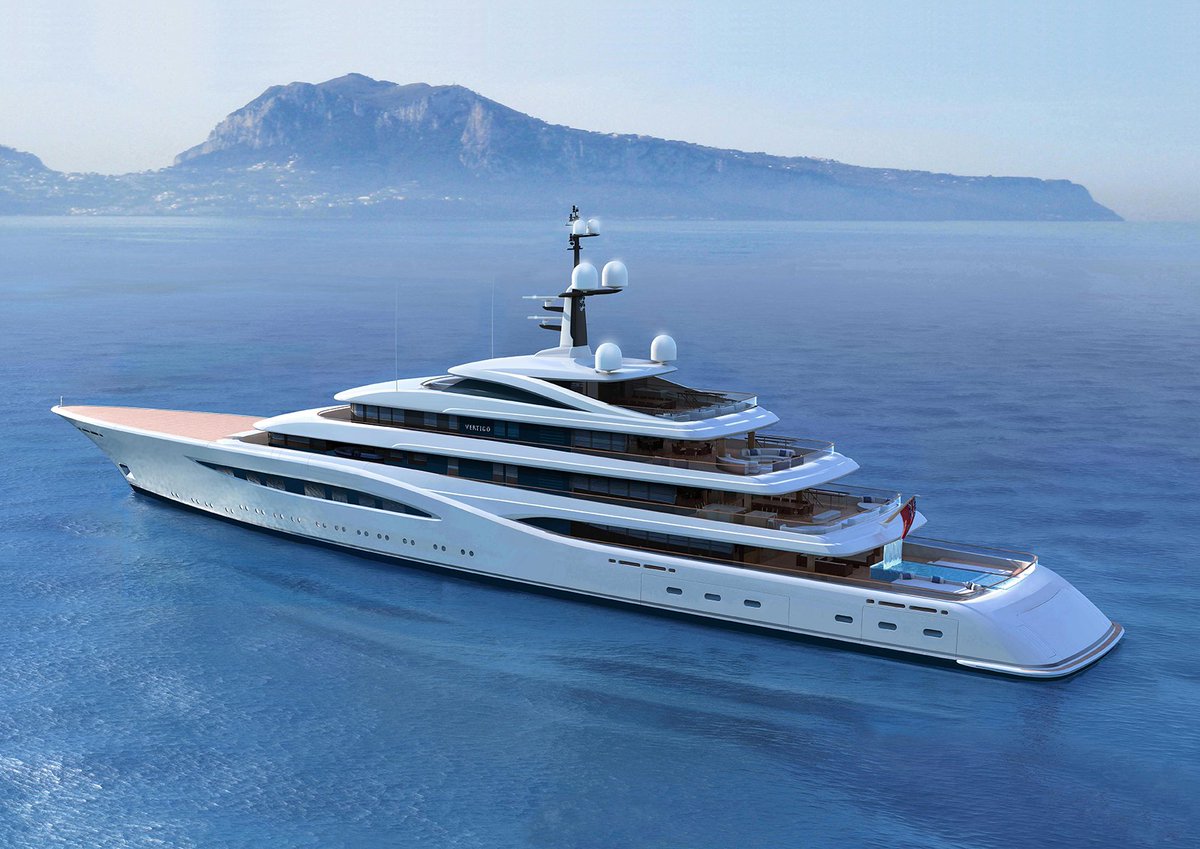 )
) 5(15-55)
5(15-55) They typically have gone on a 7-day cruise. After getting off the boat,
They typically have gone on a 7-day cruise. After getting off the boat,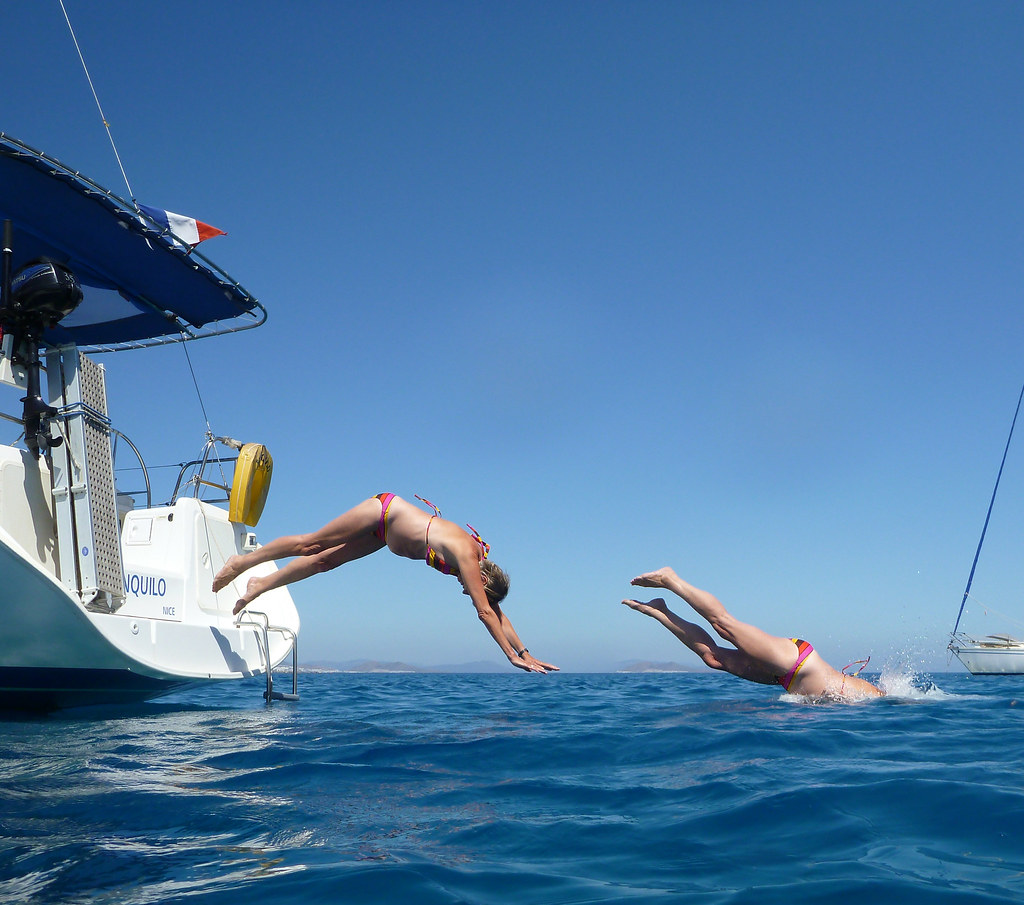 Although females predominate, for the treatment study of Dai et al (2017), positive effects of treatment were similar among genders. As of 2019, we have accumulated a few more than 250 patients with MdDS in our files.
Although females predominate, for the treatment study of Dai et al (2017), positive effects of treatment were similar among genders. As of 2019, we have accumulated a few more than 250 patients with MdDS in our files.
/fishing-on-a-boat-at-sunset-175840925-57743e8e5f9b58587590331c.jpg) 2%). Note that this estimate could easily be wrong (probably too much) by an order of magnitude.
2%). Note that this estimate could easily be wrong (probably too much) by an order of magnitude. This is very relevant because papers in the field that have “Mal de debarquement” in their title, are often studies of land-sickness. Sort of a bait/switch technique, probably because land-sickness is much easier to study, but using the name of MdDS makes it more salient. A brief discussion of land sickness is here.
This is very relevant because papers in the field that have “Mal de debarquement” in their title, are often studies of land-sickness. Sort of a bait/switch technique, probably because land-sickness is much easier to study, but using the name of MdDS makes it more salient. A brief discussion of land sickness is here. g. Schepermann et al, 2019), presumably for convenience as LDS is much easier to study. Table 1 does not include reports or data concerning subjects who symptoms that last less than 1 month, i.e. potential land-sickness, except for the work of Cha, in whom the duration of patients with “classic” MdDS could not be determined due to study design(Cha, Brodsky et al. 2008). Dai et al (2017) also distinguish between “sea legs”, and “MdDS”, but some related publications from the same group mix them together.
g. Schepermann et al, 2019), presumably for convenience as LDS is much easier to study. Table 1 does not include reports or data concerning subjects who symptoms that last less than 1 month, i.e. potential land-sickness, except for the work of Cha, in whom the duration of patients with “classic” MdDS could not be determined due to study design(Cha, Brodsky et al. 2008). Dai et al (2017) also distinguish between “sea legs”, and “MdDS”, but some related publications from the same group mix them together.
 The attitude in the literature seems to be that it is best just to tolerate these irrational nomenclatures.
The attitude in the literature seems to be that it is best just to tolerate these irrational nomenclatures. There is no “dominant” theory. If somebody tells you that MdDS is due to this or that, you should expect them to also say that this is just a theory, and that there are many other theories that could be true as well.
There is no “dominant” theory. If somebody tells you that MdDS is due to this or that, you should expect them to also say that this is just a theory, and that there are many other theories that could be true as well. This might explain why some cruises are tolerated without distress, and others not. Although it doesn’t explain much, this is the best established theory.
This might explain why some cruises are tolerated without distress, and others not. Although it doesn’t explain much, this is the best established theory. Our position on this idea is that it could explain brief (2 hour) symptoms after getting off of a boat, and also offers an explicit hypothesis that might be tested formally (i.e. people who do a lot of head rotation on a boat would be more likely to get this than people who sit quietly). However, overall we are dubious that this conjecture is correct. Why would women mainly develop inappropriate cross-coupling ? Why wouldn’t people get rid of this by simply walking around with their eyes open ?
Our position on this idea is that it could explain brief (2 hour) symptoms after getting off of a boat, and also offers an explicit hypothesis that might be tested formally (i.e. people who do a lot of head rotation on a boat would be more likely to get this than people who sit quietly). However, overall we are dubious that this conjecture is correct. Why would women mainly develop inappropriate cross-coupling ? Why wouldn’t people get rid of this by simply walking around with their eyes open ?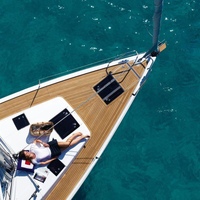 ” We are not entirely sure what to make of this conjecture, as we would not know how to confirm or deny its truth. A similar hypothesis was developed by Cohen et al (2018) — from the same lab — see next section.
” We are not entirely sure what to make of this conjecture, as we would not know how to confirm or deny its truth. A similar hypothesis was developed by Cohen et al (2018) — from the same lab — see next section. One would expect that any adaptation phenomenon would not persist forever, as if you can adapt one way, you can also reverse the process, usually much quicker than you acquired it.
One would expect that any adaptation phenomenon would not persist forever, as if you can adapt one way, you can also reverse the process, usually much quicker than you acquired it.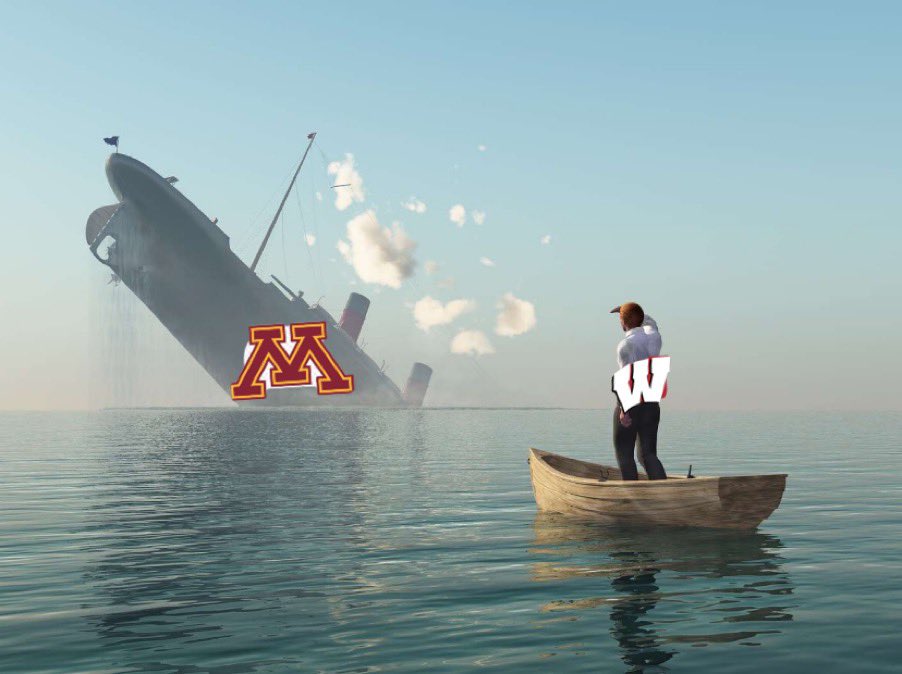
 Both are somewhat predictable as the boat is large and it’s interface between it and the ocean constrains it to low frequencies of movement.
Both are somewhat predictable as the boat is large and it’s interface between it and the ocean constrains it to low frequencies of movement.


 It is well known that there are motion sickness related genes. Out of more than 250 patients with MDDS, we have encountered only a single pair of identical twins who both developed MdDS (on different occasions).
It is well known that there are motion sickness related genes. Out of more than 250 patients with MDDS, we have encountered only a single pair of identical twins who both developed MdDS (on different occasions).
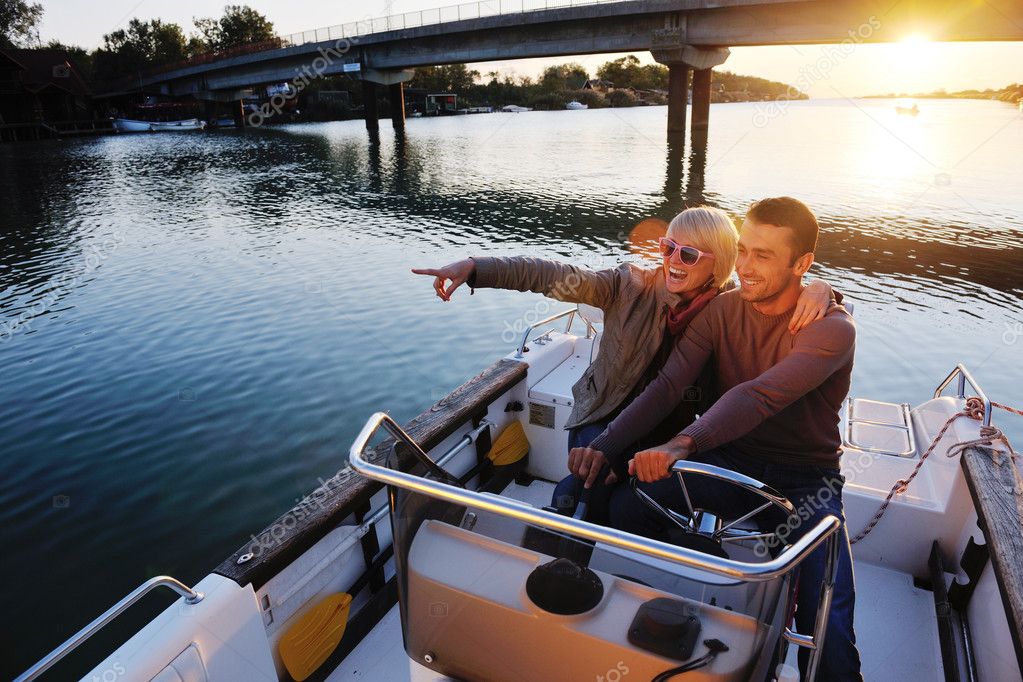 ” 80% of the 29 subjects in this study were female, almost all were middle aged, and almost all had symptoms for more than 1 month; thus they met the conventional criteria for this MdDS. The authors point out that the brain volume differences might be due to compensatory processes rather than causes of symptoms. They also note that the results were presented with “uncorrected p-values and it can be argued that many of the voxels seen in the contrasts could be seen by chance”.
” 80% of the 29 subjects in this study were female, almost all were middle aged, and almost all had symptoms for more than 1 month; thus they met the conventional criteria for this MdDS. The authors point out that the brain volume differences might be due to compensatory processes rather than causes of symptoms. They also note that the results were presented with “uncorrected p-values and it can be argued that many of the voxels seen in the contrasts could be seen by chance”.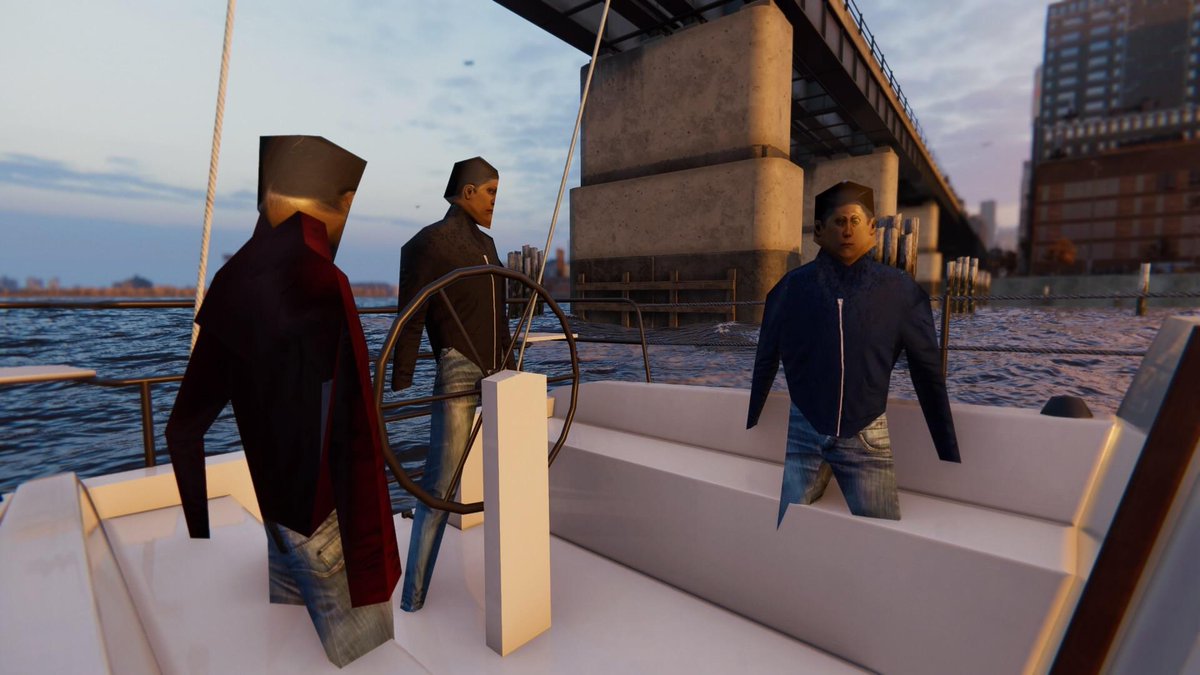 We find these ideas interesting but vague. The separation between cause and effect — i.e. is the change in brain function the cause of MdDS or a consequence, still seems to be missing. There is also the difficulty that high field MRI’s induce dizziness themselves. We are not convinced by the observation in this article that nystagmus (eye movement) was not observed in their own subjects, as we think the physics involved in MRI are pretty straightforward.
We find these ideas interesting but vague. The separation between cause and effect — i.e. is the change in brain function the cause of MdDS or a consequence, still seems to be missing. There is also the difficulty that high field MRI’s induce dizziness themselves. We are not convinced by the observation in this article that nystagmus (eye movement) was not observed in their own subjects, as we think the physics involved in MRI are pretty straightforward. We have no idea what to make of this. Of course, everything is connected to everything and which is the chicken and which is the egg ? Hopefully more studies will be done.
We have no idea what to make of this. Of course, everything is connected to everything and which is the chicken and which is the egg ? Hopefully more studies will be done.
 2004). While the accuracy of visual input depends on whether one is inside the boat or on the deck, semicircular canal input is accurate on boats, and somatosensory input is intermittently accurate. Accordingly, it is difficult to understand a rationale for this adaptation. An intrinsic problem with this study is that the study group were young men with motion sickness and transient land-sickness, not middle aged women with the month-or-greater MdDS syndrome.
2004). While the accuracy of visual input depends on whether one is inside the boat or on the deck, semicircular canal input is accurate on boats, and somatosensory input is intermittently accurate. Accordingly, it is difficult to understand a rationale for this adaptation. An intrinsic problem with this study is that the study group were young men with motion sickness and transient land-sickness, not middle aged women with the month-or-greater MdDS syndrome. It is interesting to note that Stoffregen’s paper was published in PLOS, an open source journal. While the PLOS journals are very accessible, their review process is quite different than the traditional one that involves experts in the field. In other words, publications in PLOS carry less weight than publication in a standard journal where the material is reviewed by experts chosen by their knowledge of the topic.
It is interesting to note that Stoffregen’s paper was published in PLOS, an open source journal. While the PLOS journals are very accessible, their review process is quite different than the traditional one that involves experts in the field. In other words, publications in PLOS carry less weight than publication in a standard journal where the material is reviewed by experts chosen by their knowledge of the topic.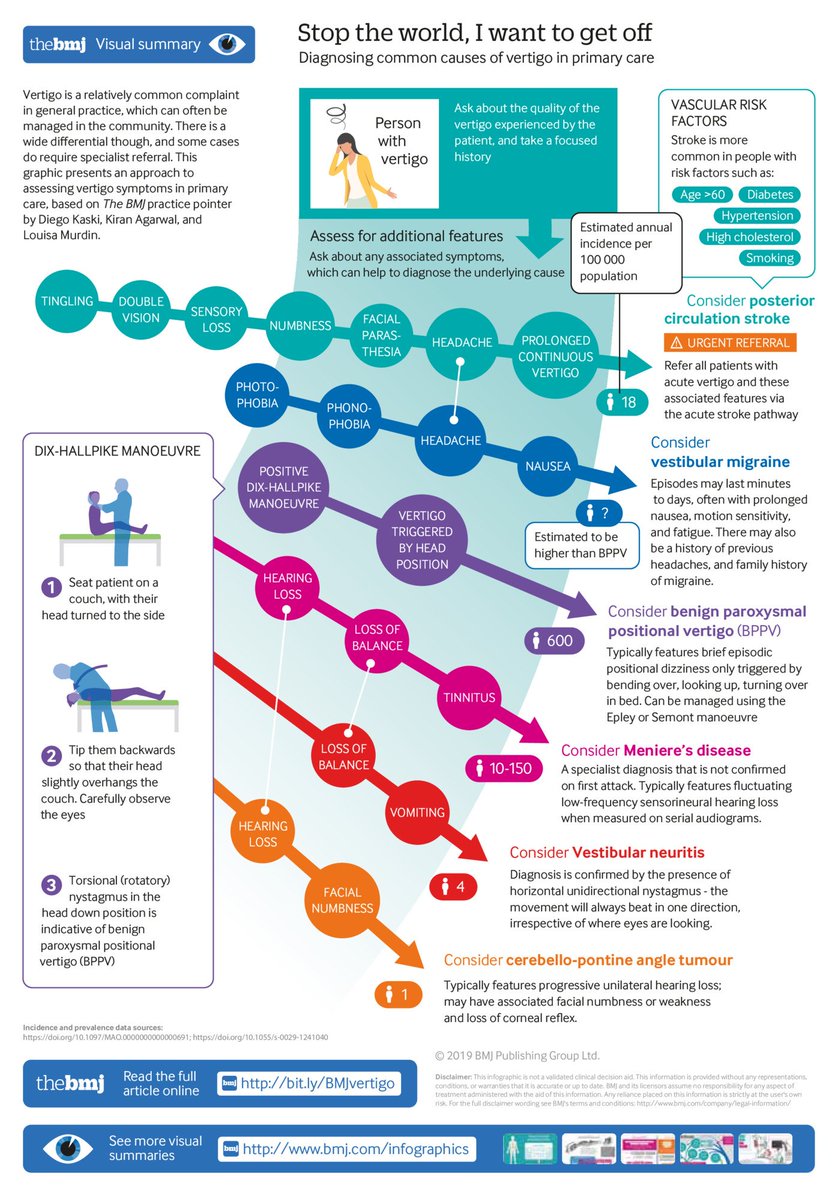
 This would be in favor of habituation over readaptation.
This would be in favor of habituation over readaptation.
 2 persistent MdDS: symptoms last for more than 1 month
2 persistent MdDS: symptoms last for more than 1 month Our ideas about treatment are found here.
Our ideas about treatment are found here. Note that the Ombergen criteria requires “structural imaging”, which might include an MRI or CT scan of the brain.
Note that the Ombergen criteria requires “structural imaging”, which might include an MRI or CT scan of the brain. The big advantage to the VHIT is that it is unlikely to be associated with motion sickness and also that it is a very good test for vestibular neuritis. .
The big advantage to the VHIT is that it is unlikely to be associated with motion sickness and also that it is a very good test for vestibular neuritis. .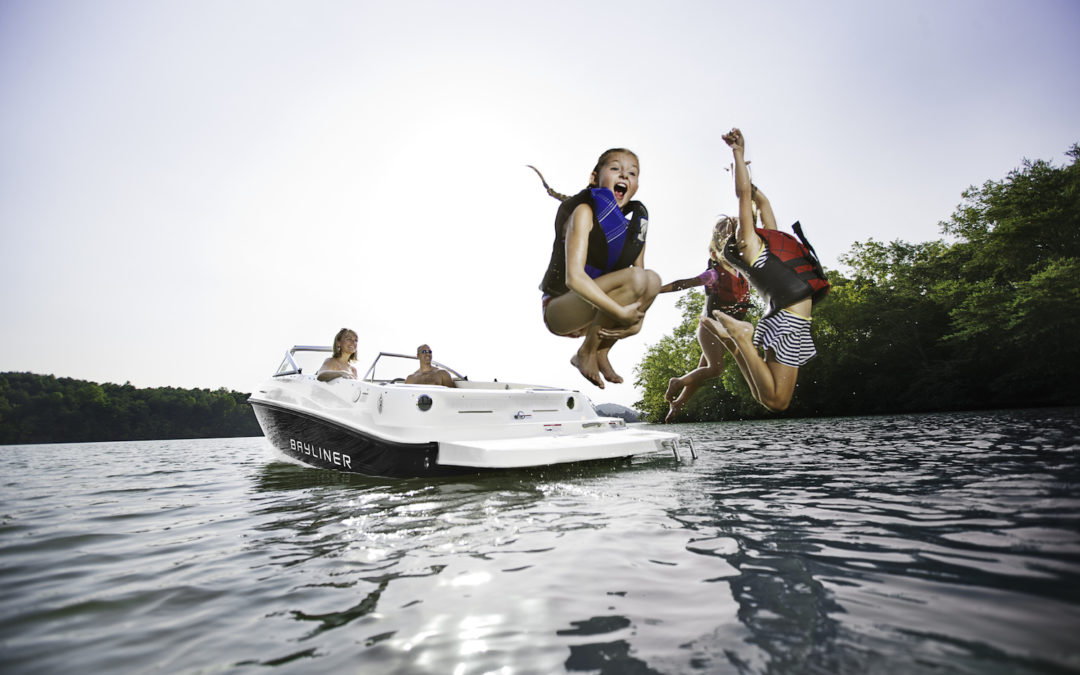 We are presently looking at this situation in patients taking venlafaxine. See comments above regarding mechanism and serotonin.
We are presently looking at this situation in patients taking venlafaxine. See comments above regarding mechanism and serotonin.